
The remarkable twin Voyager spacecraft continue to explore the outer reaches of the solar system decades after they completed their surveys of the Outer Planets. Launched in 1977 (September 5 for Voyager 1 (V1) and August 20 for Voyager 2 (V2), whose trajectory took it past Jupiter after Voyager 1), the spacecraft pair made many fundamental discoveries as they flew past Jupiter (March 1979 for V1, July 1979 for V2) and Saturn (November 1980 for V1, August 1981 for V2). The path of Voyager 2 past Saturn was targeted so that it continued within the plane of the solar system, allowing it to become the first spacecraft to visit Uranus (January 1986) and Neptune (August 1989). Following the Neptune encounter, both spacecraft started a new phase of exploration under the intriguing title of the Voyager Interstellar Mission.
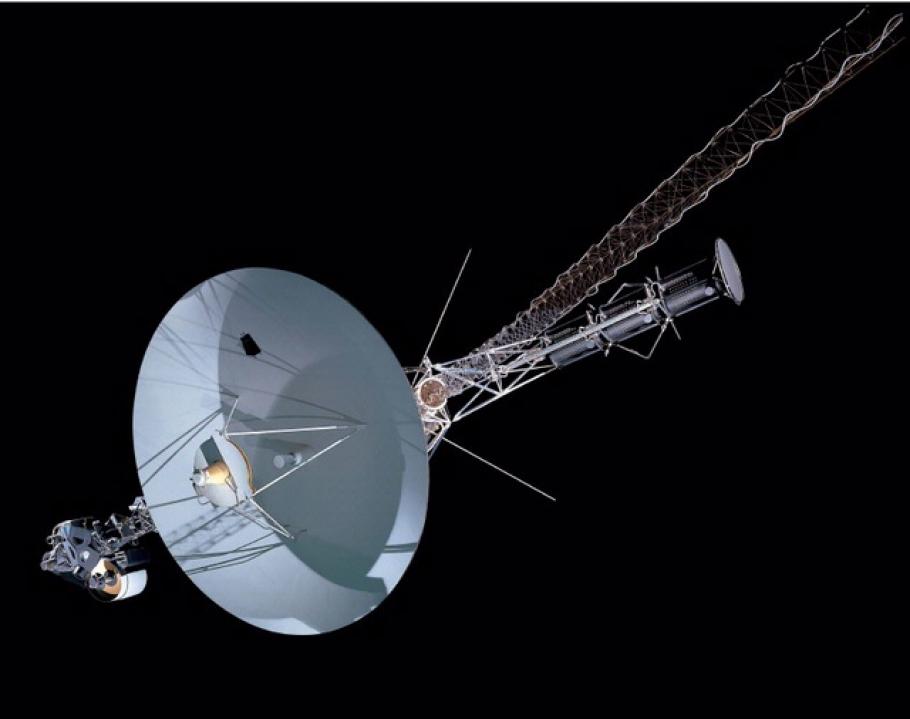
Five instruments continue to collect important measurements of magnetic fields, plasmas, and charged particles as both spacecraft explore different portions of the solar system beyond the orbits of the planets. Voyager 1 is now more than 118 astronomical units (one AU is equal to the average orbital distance of Earth from the Sun) distant from the sun, traveling at a speed (relative to the sun) of 17.1 kilometers per second (10.6 miles per second). Voyager 2 is now more than 96 AU from the sun, traveling at a speed of 15.5 kilometers per second (9.6 miles per second). Both spacecraft are moving considerably faster than Pioneers 10 and 11, two earlier spacecraft that became the first robotic visitors to fly past Jupiter and Saturn in the mid-70s.
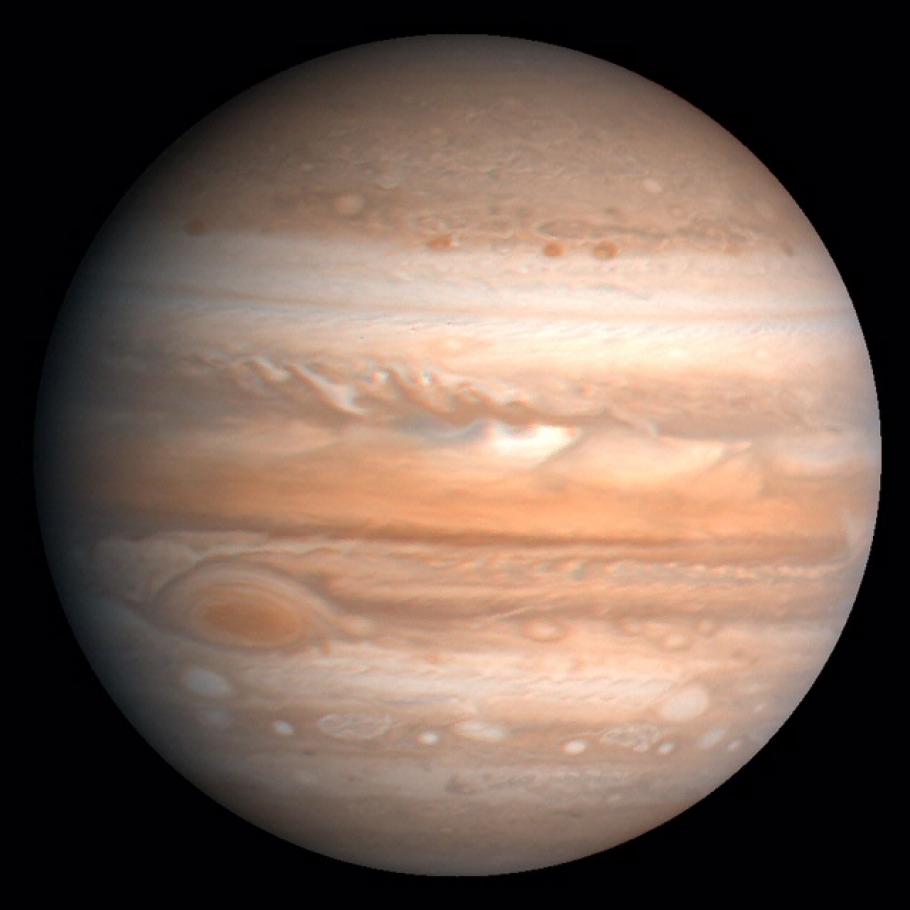
This processed color image of Jupiter was produced in 1990 by the U.S. Geological Survey from a Voyager image captured in 1979. The colors have been enhanced to bring out detail. Zones of light-colored, ascending clouds alternate with bands of dark, descending clouds. The clouds travel around the planet in alternating eastward and westward belts at speeds of up to 540 kilometers per hour. Tremendous storms as big as Earthly continents surge around the planet. The Great Red Spot (oval shape toward the lower-left) is an enormous anticyclonic storm that drifts along its belt, eventually circling the entire planet.
As seen in the night sky at Earth, Voyager 1 is within the confines of the constellation Ophiuchus, only slightly above the celestial equator; no telescope can see it, but radio contact is expected to be maintained for at least the next ten years. Voyager 2 is within the bounds of the constellation Telescopium (which somehow sounds quite appropriate) in the far southern night sky.
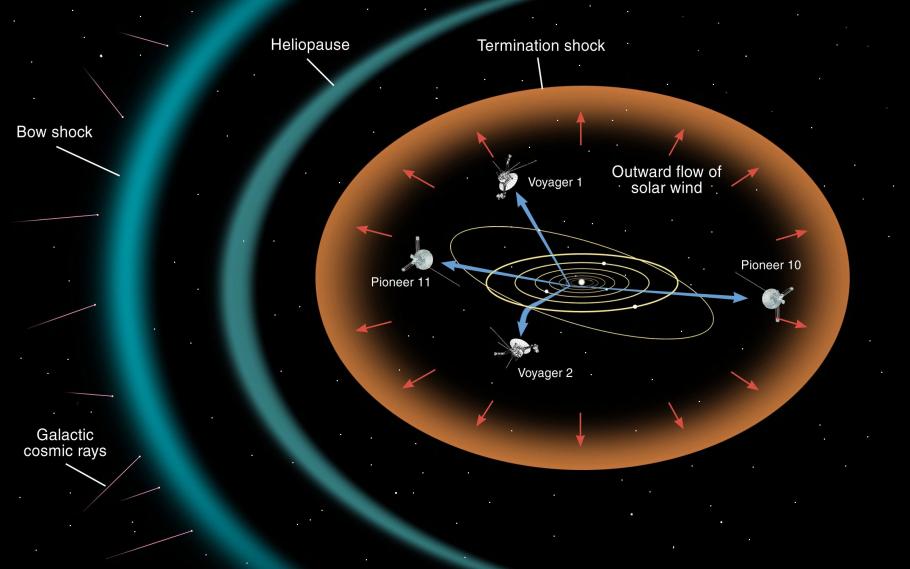
Both spacecraft have already passed something called the Termination Shock † (December 2004 for V1, August 2007 for V2), where the solar wind slows as it starts to interact with the particles and fields present between the stars. It is expected that both spacecraft will encounter the Heliopause, where the solar wind ceases as true interstellar space begins, from 10 to 20 years after crossing the Termination Shock. Theories exist for what should be present in interstellar space, but the Voyagers will become the first man-made objects to go beyond the influences of the Sun, hopefully returning the first measurements of what it is like out there. Each spacecraft is carrying a metal record with encoded sounds and sights from Earth, along with the needle needed to read the recordings, and simplified instructions for where the spacecraft came from, in case they are eventually discovered by intelligent extra-terrestrials.
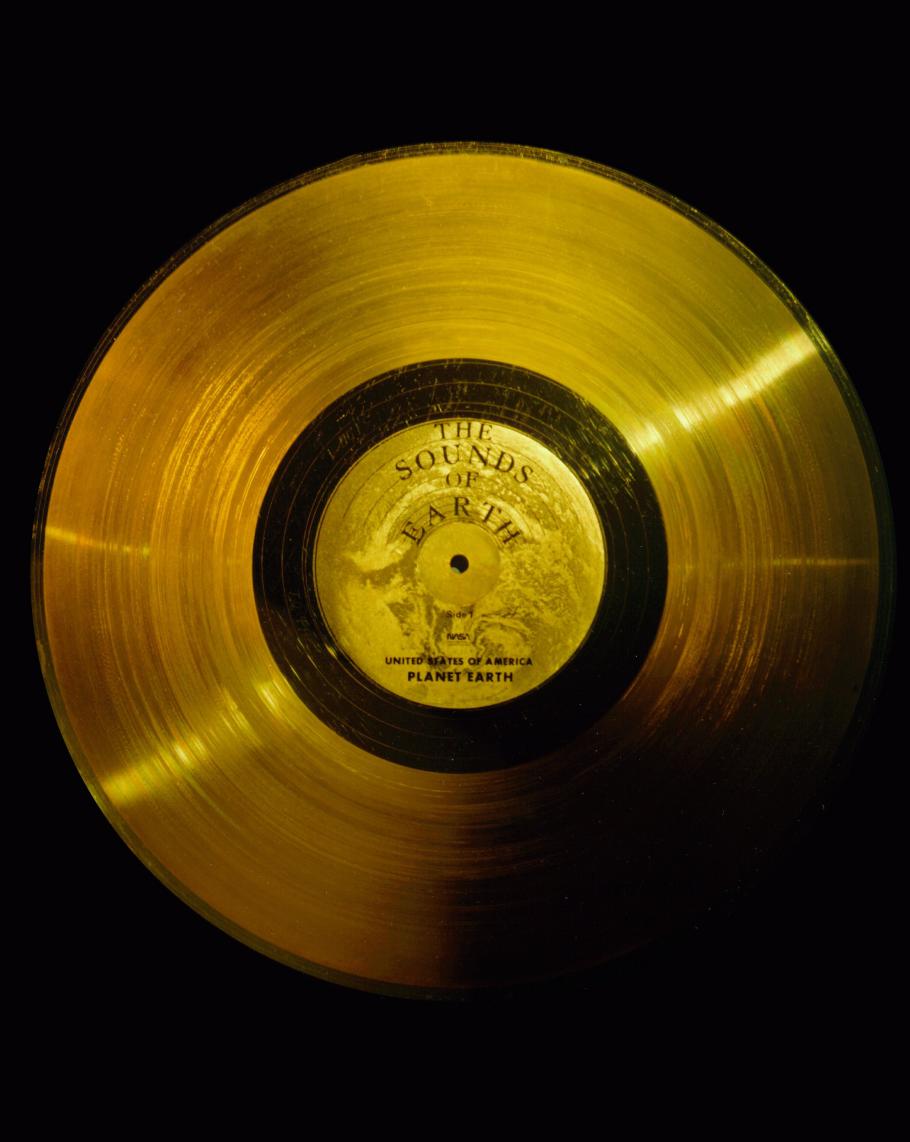
Keep track of the Voyager spacecraft on the official Voyager Interstellar Mission website or follow @NASAVoyager2 on Twitter. † The sun ejects a continuous stream of charged particles (electrons, protons, etc) that is collectively termed the solar wind. The particles are traveling extremely fast and are dense enough to form a very tenuous atmosphere; the heliosphere represents the volume of space where the effects of the solar wind dominate over those of particles in interstellar space. The solar wind particles are moving very much faster than the local speed of sound represented by their low volume density. When the particles begin to interact with interstellar particles and fields (the interaction can be either physically running into other particles or experiencing an electromagnetic force resulting from a charged particle moving within a magnetic field), then they start to slow down. The point at which they become subsonic (rather than their normal hypersonic speed) is the Termination Shock.
We rely on the generous support of donors, sponsors, members, and other benefactors to share the history and impact of aviation and spaceflight, educate the public, and inspire future generations. With your help, we can continue to preserve and safeguard the world’s most comprehensive collection of artifacts representing the great achievements of flight and space exploration.
- Get Involved
- Host an Event

Thank you. You have successfully signed up for our newsletter.
Error message, sorry, there was a problem. please ensure your details are valid and try again..
- Free Timed-Entry Passes Required
- Terms of Use

- Object Information
- Planetarium

Voyager 1 live position and data
This page shows Voyager 1 location and other relevant astronomical data in real time. The celestial coordinates, magnitude, distances and speed are updated in real time and are computed using high quality data sets provided by the JPL Horizons ephemeris service (see acknowledgements for details). The sky map shown in the background represents a rectangular portion of the sky 60x40 arcminutes wide. By comparison the diameter of the full Moon is about 30 arcmins, so the full horizontal extent of the map is approximately 2 full Moons wide. Depending on the device you are using, the map can be dragged horizondally or vertically using the mouse or touchscreen. The deep sky image in the background is provided by the Digitized Sky Survey ( acknowledgements ).
Current close conjunctions
List of bright objects (stars brighter than magnitude 9.0 and galaxies brighter than magmitude 14.0) close to Voyager 1 (less than 1.5 degrees):
Additional resources
- 15 Days Ephemerides
- Interactive Sky Map (Planetarium)
- Rise & Set Times
- Distance from Earth
Astronomy databases
- The Digitized Sky Survey, a photographic survey of the whole sky created using images from different telescopes, including the Oschin Schmidt Telescope on Palomar Mountain
- The Hipparcos Star Catalogue, containing more than 100.000 bright stars
- The PGC 2003 Catalogue, containing information about 1 million galaxies
- The GSC 2.3 Catalogue, containing information about more than 2 billion stars and galaxies

Suggested Searches
- Climate Change
- Expedition 64
- Mars perseverance
- SpaceX Crew-2
- International Space Station
- View All Topics A-Z
Humans in Space
Earth & climate, the solar system, the universe, aeronautics, learning resources, news & events.
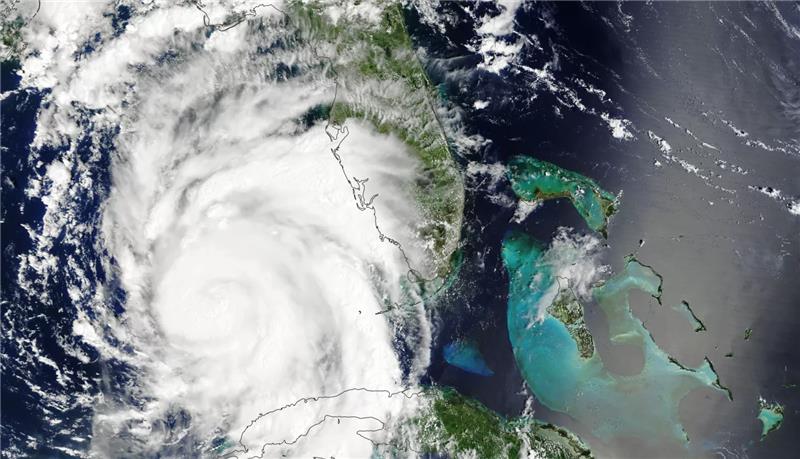
NASA, IBM Research to Release New AI Model for Weather, Climate
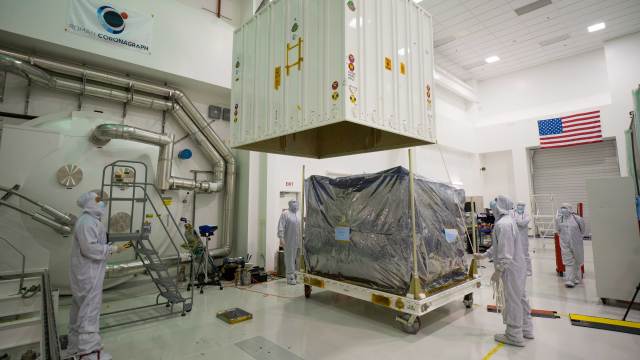
NASA Tool Gets Ready to Image Faraway Planets
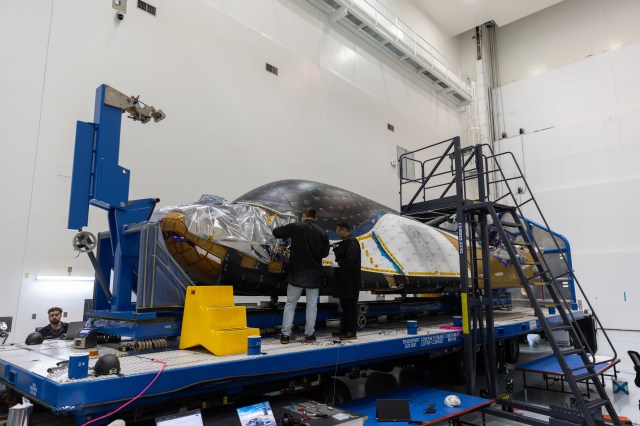
NASA, Sierra Space Deliver Dream Chaser to Florida for Launch Preparation
- Search All NASA Missions
- A to Z List of Missions
- Upcoming Launches and Landings
- Spaceships and Rockets
- Communicating with Missions
- James Webb Space Telescope
- Hubble Space Telescope
- Why Go to Space
- Astronauts Home
- Commercial Space
- Destinations
- Living in Space
- Explore Earth Science
- Earth, Our Planet
- Earth Science in Action
- Earth Multimedia
- Earth Science Researchers
- Pluto & Dwarf Planets
- Asteroids, Comets & Meteors
- The Kuiper Belt
- The Oort Cloud
- Skywatching
- The Search for Life in the Universe
- Black Holes
- The Big Bang
- Dark Energy & Dark Matter
- Earth Science
- Planetary Science
- Astrophysics & Space Science
- The Sun & Heliophysics
- Biological & Physical Sciences
- Lunar Science
- Citizen Science
- Astromaterials
- Aeronautics Research
- Human Space Travel Research
- Science in the Air
- NASA Aircraft
- Flight Innovation
- Supersonic Flight
- Air Traffic Solutions
- Green Aviation Tech
- Drones & You
- Technology Transfer & Spinoffs
- Space Travel Technology
- Technology Living in Space
- Manufacturing and Materials
- Science Instruments
- For Kids and Students
- For Educators
- For Colleges and Universities
- For Professionals
- Science for Everyone
- Requests for Exhibits, Artifacts, or Speakers
- STEM Engagement at NASA
- NASA's Impacts
- Centers and Facilities
- Directorates
- Organizations
- People of NASA
- Internships
- Our History
- Doing Business with NASA
- Get Involved
- Aeronáutica
- Ciencias Terrestres
- Sistema Solar
- All NASA News
- Video Series on NASA+
- Newsletters
- Social Media
- Media Resources
- Upcoming Launches & Landings
- Virtual Events
- Sounds and Ringtones
- Interactives
- STEM Multimedia
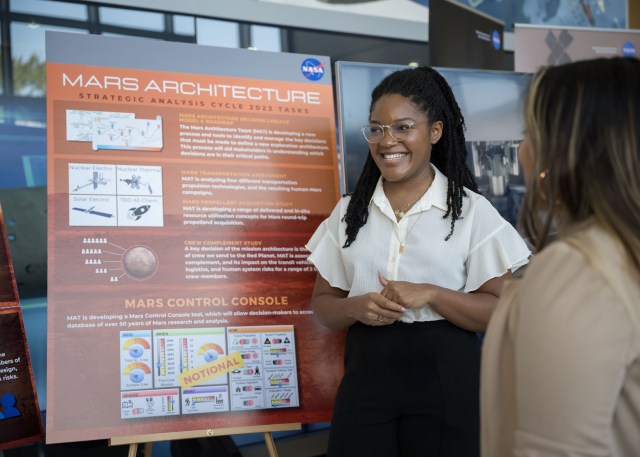
Clare Luckey: Shaping the Future of Mars Missions and Inspiring the Artemis Generation
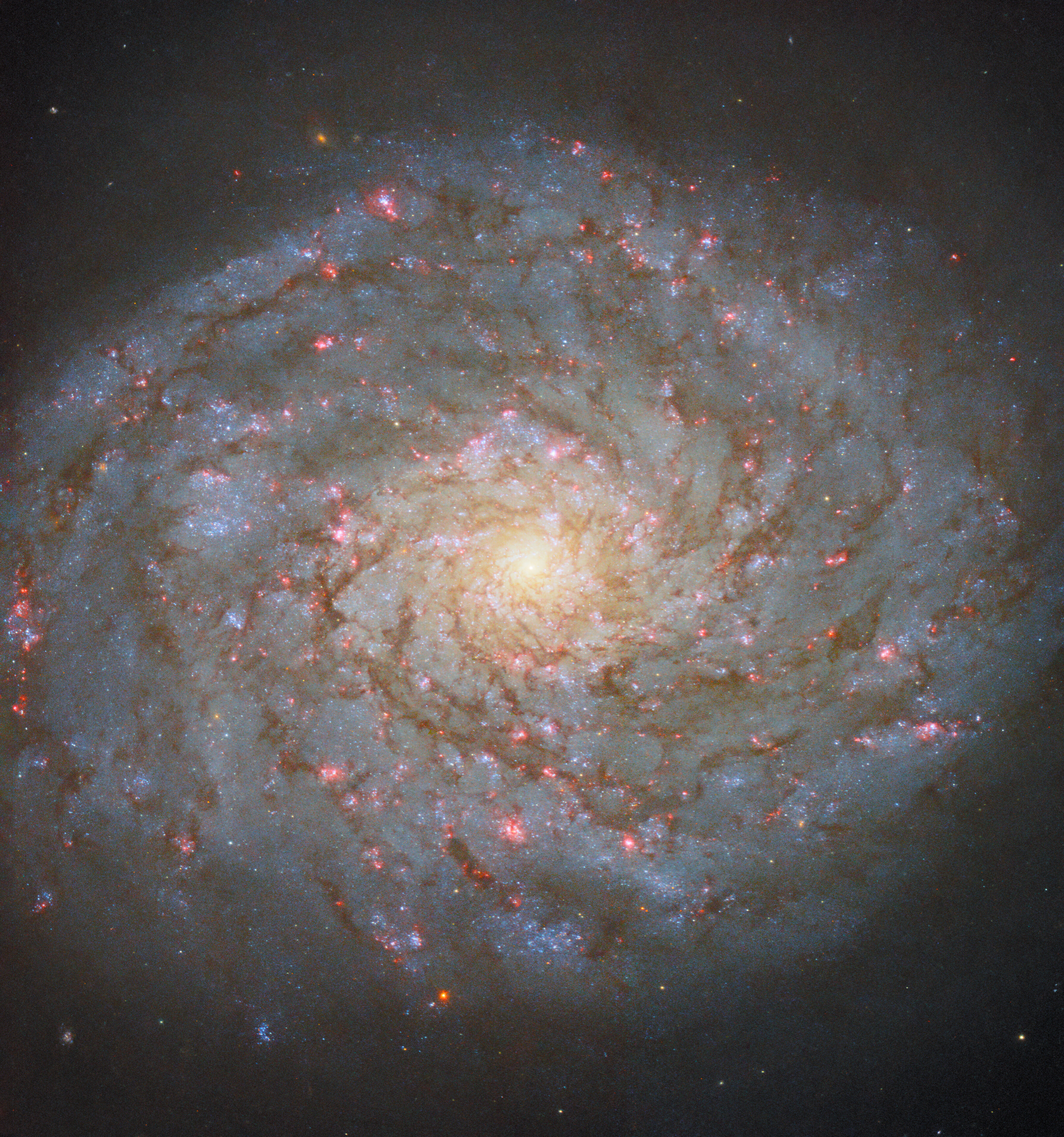
Hubble Captures a Bright Spiral in the Queen’s Hair
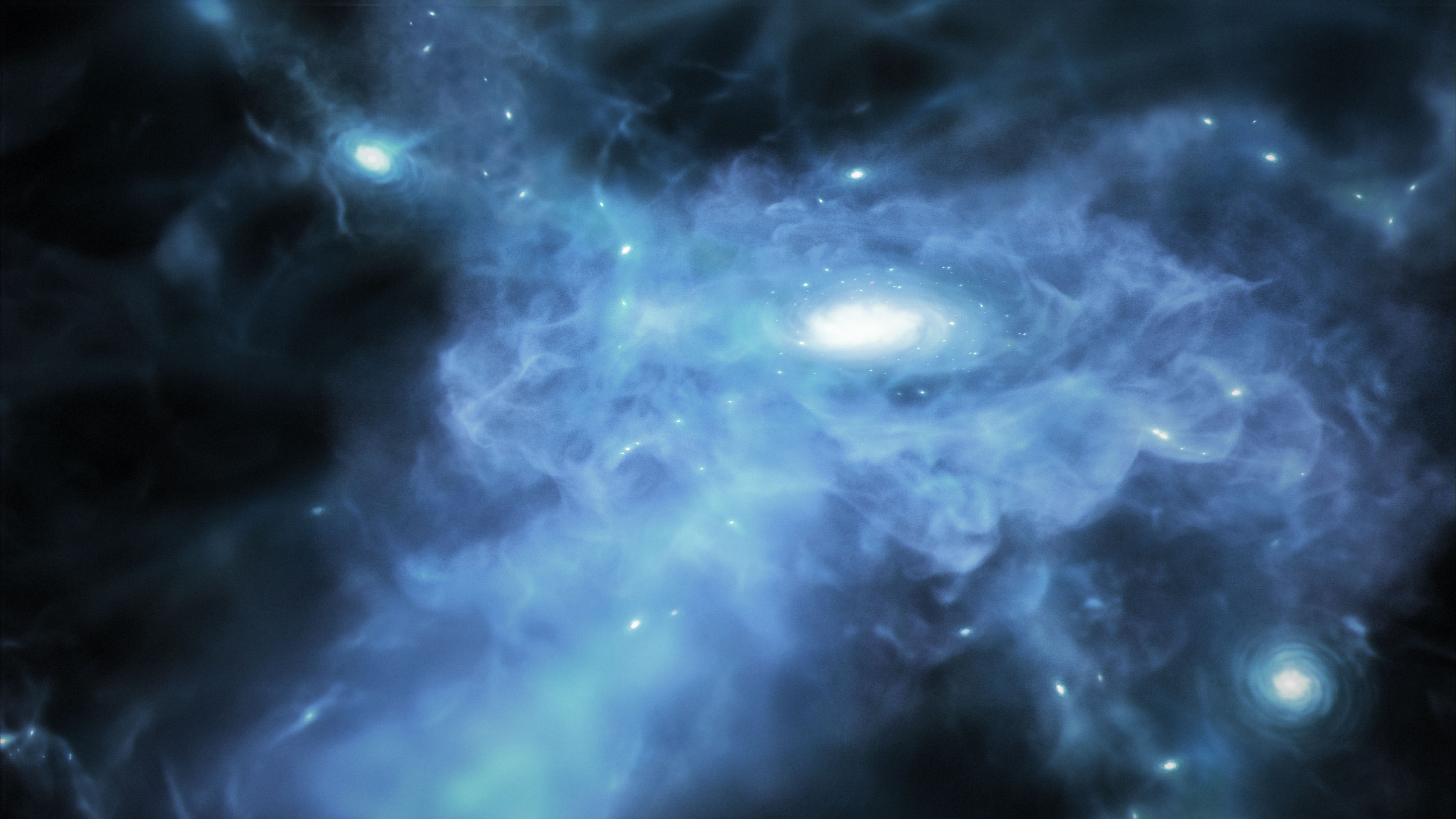
Galaxies Actively Forming in Early Universe Caught Feeding on Cold Gas

Welcome Back to Planet Earth, Expedition 70 Crew!

Astronaut Exercise

Eleasa Kim: Pioneering CLDP Payload Operations and Cultural Integration
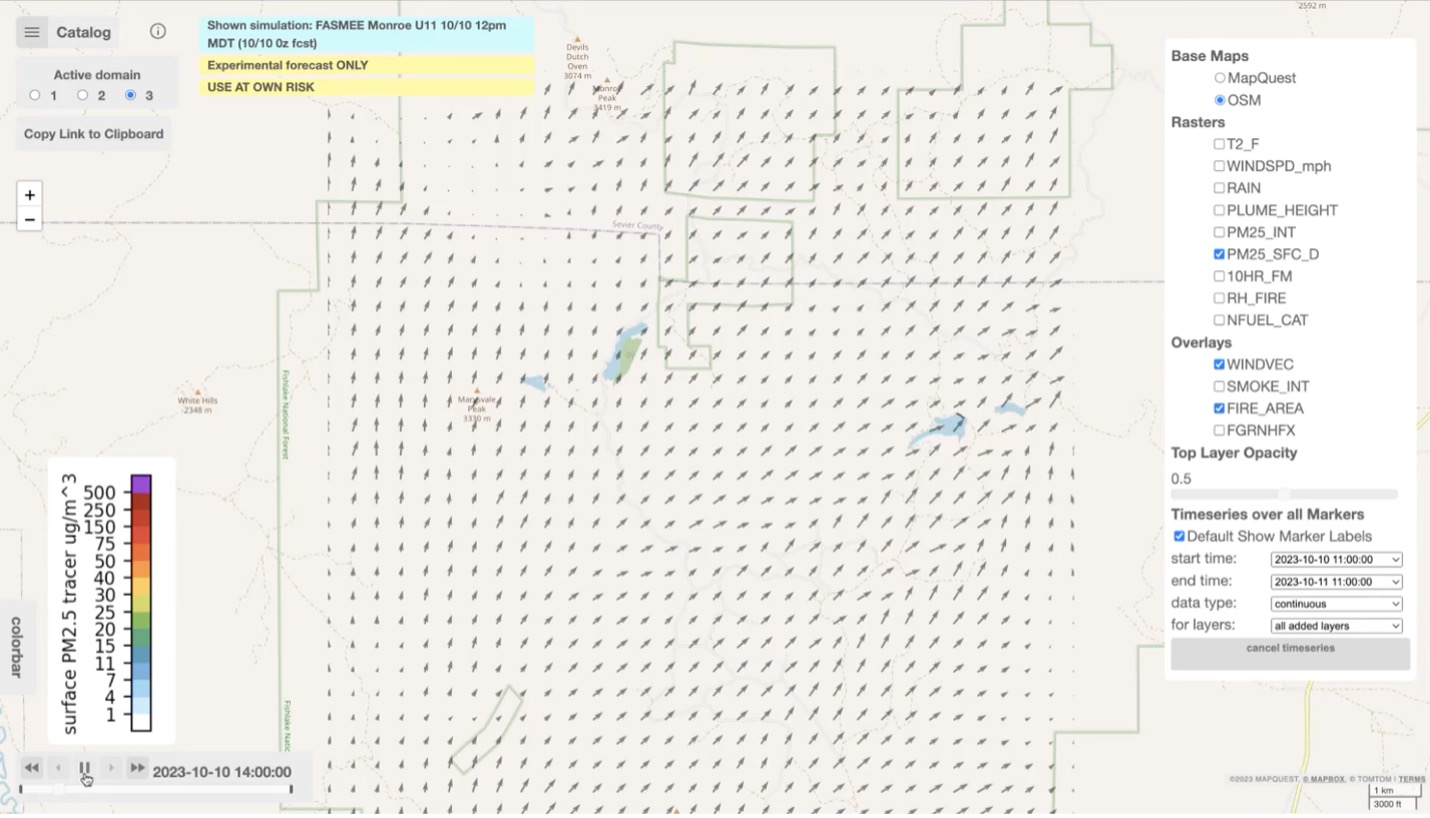
NASA “Wildfire Digital Twin” Pioneers New AI Models and Streaming Data Techniques for Forecasting Fire and Smoke

5 Things to Know About NASA’s Tiny Twin Polar Satellites
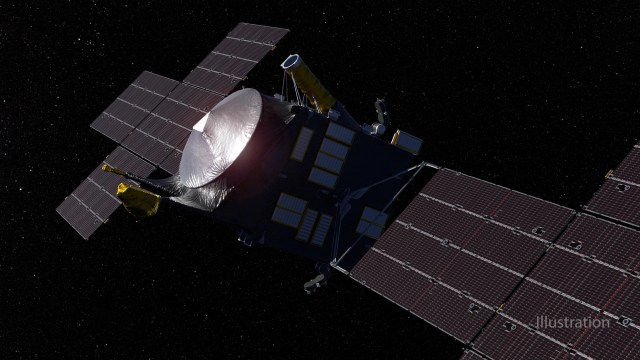
NASA’s Psyche Fires Up Its Sci-Fi-Worthy Thrusters

NASA’s Juno Provides High-Definition Views of Europa’s Icy Shell

The Next Full Moon is the Flower, Corn, or Corn Planting Moon
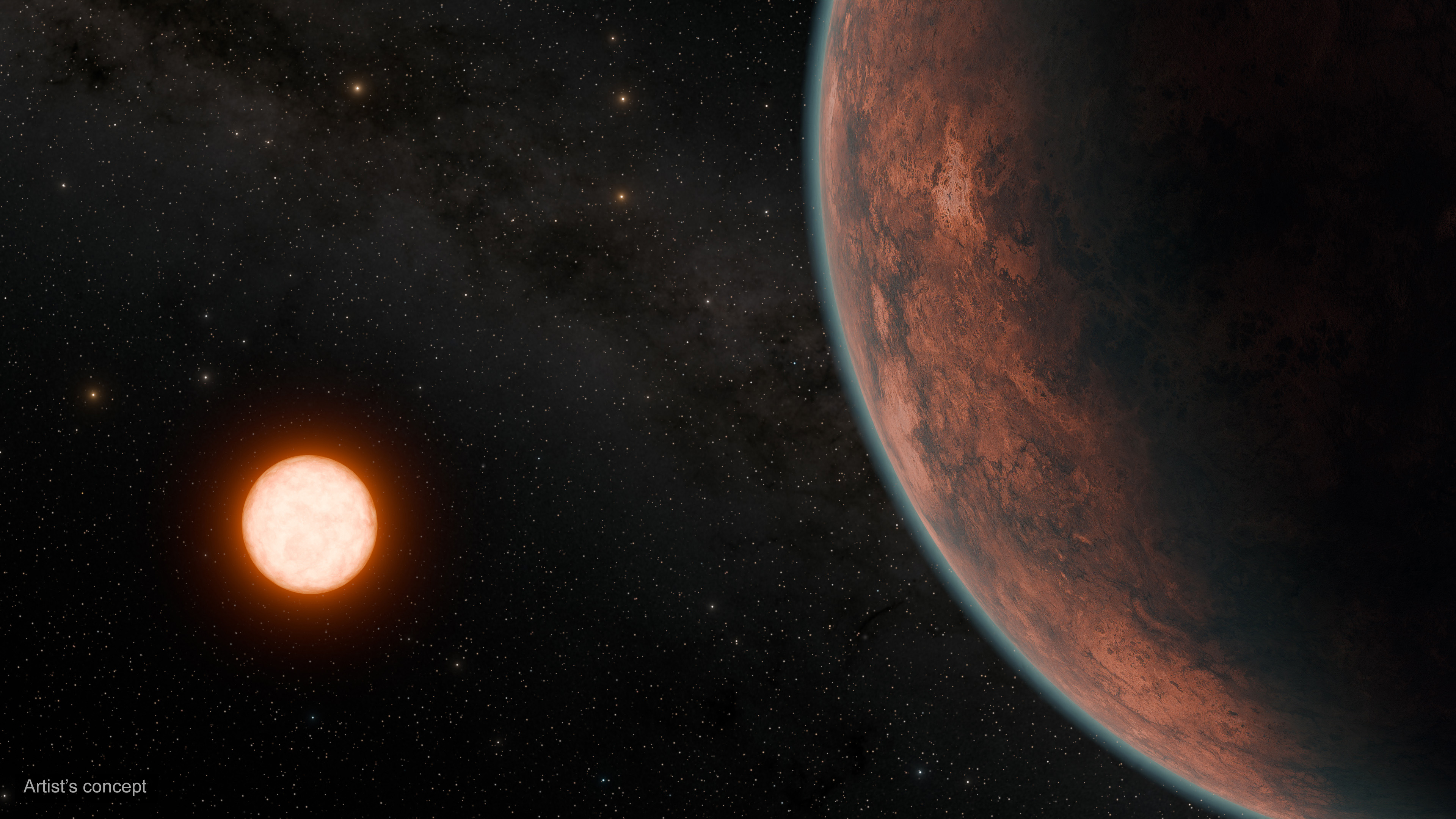
NASA’s TESS Finds Intriguing World Sized Between Earth, Venus

Open Science News
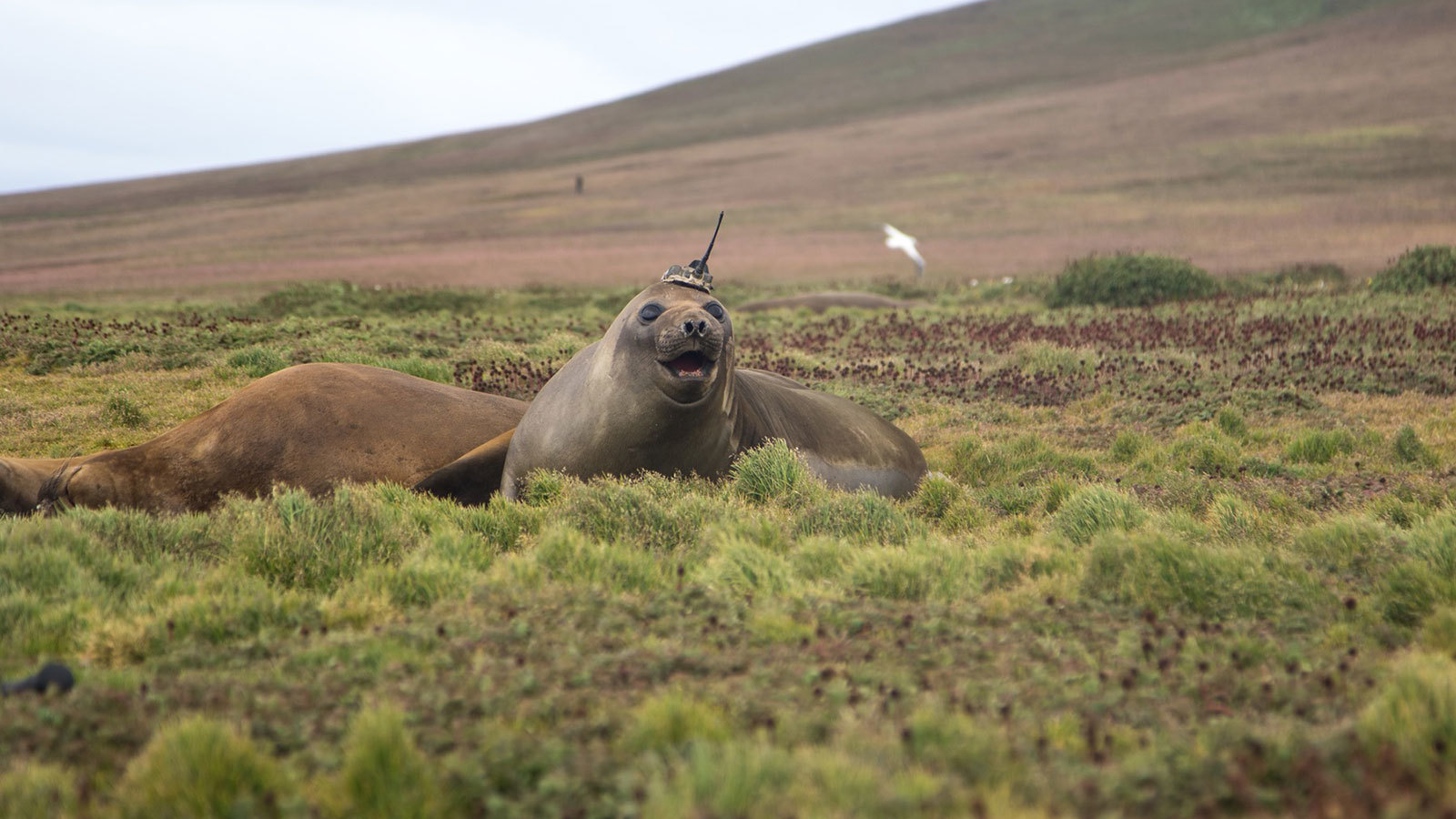
E.11 Consortium in Biological Sciences Clarification on how to Address Eligibility
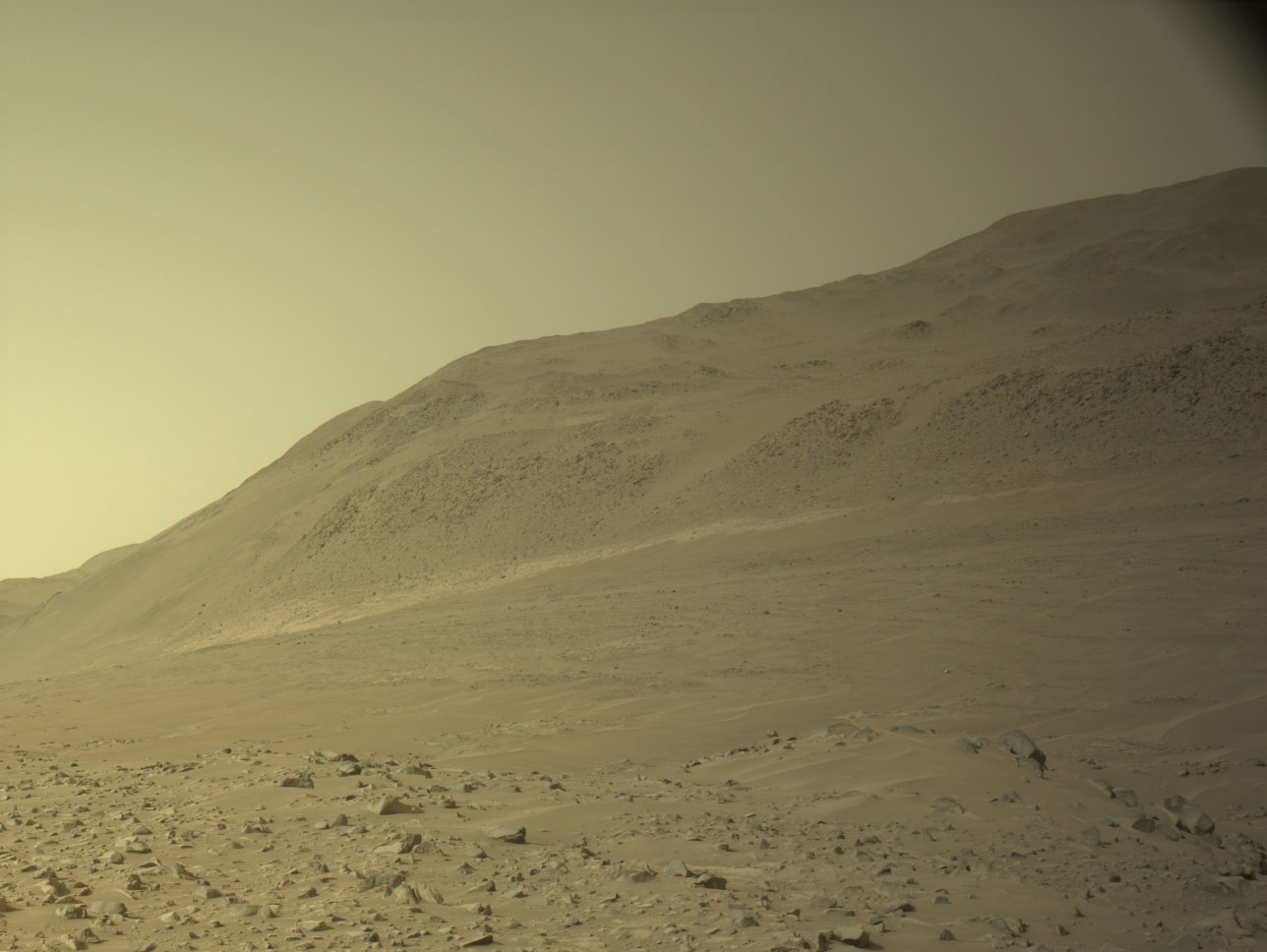
Updated Points of Contact for LDAP, MDAP, and DDAP

NASA, Industry to Start Designing More Sustainable Jet Engine Core

Aviary: A New NASA Software Platform for Aircraft Modelling

NASA’s X-59 Passes Milestone Toward Safe First Flight
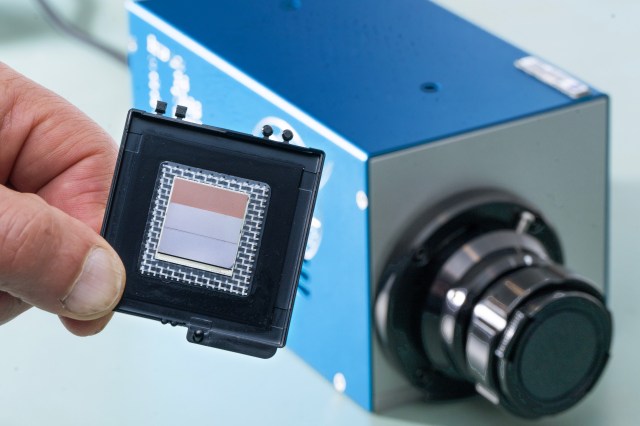
NASA’s Compact Infrared Cameras Enable New Science

Tech Today: From Spacesuits to Racing Suits

NASA Around the World: Interns Teach Virtual Lessons in Kenya

Jennifer Scott Williams: Leading the Next Giant Leap in Space Exploration and Championing STEM Advocacy
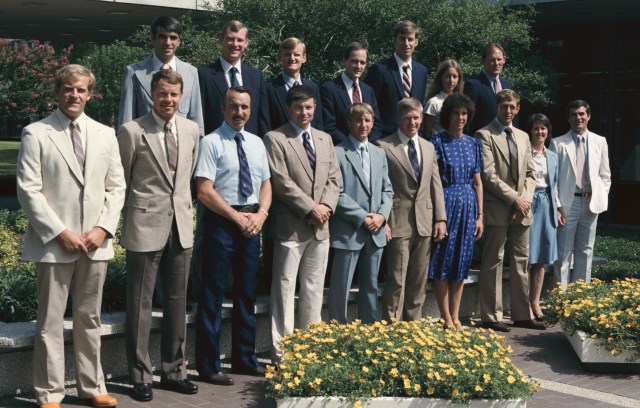
40 Years Ago: NASA Selects its 10th Group of Astronauts

Diez maneras en que los estudiantes pueden prepararse para ser astronautas


Astronauta de la NASA Marcos Berríos

Resultados científicos revolucionarios en la estación espacial de 2023
Nasa voyager 1 probe encounters new region in deep space.

WASHINGTON – NASA’s Voyager 1 spacecraft has entered a new region at the far reaches of our solar system that scientists feel is the final area the spacecraft has to cross before reaching interstellar space. Scientists refer to this new region as a magnetic highway for charged particles because our sun’s magnetic field lines are connected to interstellar magnetic field lines. This connection allows lower-energy charged particles that originate from inside our heliosphere, or the bubble of charged particles the sun blows around itself, to zoom out and allows higher-energy particles from outside to stream in. Before entering this region, the charged particles bounced around in all directions, as if trapped on local roads inside the heliosphere. The Voyager team infers this region is still inside our solar bubble because the direction of the magnetic field lines has not changed. The direction is predicted to change when Voyager breaks through to interstellar space. The new results were described at the American Geophysical Union meeting in San Francisco on Monday. “Although Voyager 1 still is inside the sun’s environment, we now can taste what it’s like on the outside because the particles are zipping in and out on this magnetic highway,” said Edward Stone, Voyager project scientist based at the California Institute of Technology, Pasadena. “We believe this is the last leg of our journey to interstellar space. Our best guess is it’s likely just a few months to a couple years away. The new region isn’t what we expected, but we’ve come to expect the unexpected from Voyager.” Since December 2004 when Voyager 1 crossed a point in space called the termination shock, the spacecraft has been exploring the heliosphere’s outer layer, called the heliosheath. In this region, the stream of charged particles from the sun known as the solar wind abruptly slowed down from supersonic speeds and became turbulent. Voyager 1’s environment was consistent for about five and a half years. The spacecraft then detected that the outward speed of the solar wind slowed to zero. The intensity of the magnetic field also began to increase at that time. Voyager data from two onboard instruments that measure charged particles showed the spacecraft first entered this magnetic highway region on July 28, 2012. The region ebbed away and flowed toward Voyager 1 several times. The spacecraft entered the region again Aug. 25 and the environment has been stable since. “If we were judging by the charged particle data alone, I would have thought we were outside the heliosphere,” said Stamatios Krimigis, principal investigator of the low-energy charged particle instrument, based at the Johns Hopkins Applied Physics Laboratory, Laurel, Md. “But we need to look at what all the instruments are telling us and only time will tell whether our interpretations about this frontier are correct.” Spacecraft data revealed the magnetic field became stronger each time Voyager entered the highway region; however, the direction of the magnetic field lines did not change. “We are in a magnetic region unlike any we’ve been in before – about 10 times more intense than before the termination shock – but the magnetic field data show no indication we’re in interstellar space,” said Leonard Burlaga, a Voyager magnetometer team member based at NASA’s Goddard Space Flight Center in Greenbelt, Md. “The magnetic field data turned out to be the key to pinpointing when we crossed the termination shock. And we expect these data will tell us when we first reach interstellar space.” Voyager 1 and 2 were launched 16 days apart in 1977 and at least one of the spacecraft visited Jupiter, Saturn, Uranus and Neptune. Voyager 1 is the most distant human-made object, about 11 billion miles (18 billion kilometers) away from the sun. The signal from Voyager 1 takes approximately 17 hours to travel to Earth. Voyager 2, the longest continuously operated spacecraft, is about 9 billion miles (15 billion kilometers) away from our sun. While Voyager 2 has seen changes similar to those seen by Voyager 1, the changes are much more gradual. Scientists do not think Voyager 2 has reached the magnetic highway. The Voyager spacecraft were built and continue to be operated by NASA’s Jet Propulsion Laboratory, in Pasadena, Calif. The Voyager missions are a part of NASA’s Heliophysics System Observatory, sponsored by the Heliophysics Division of the Science Mission Directorate in NASA Headquarters in Washington. For more information about the Voyager spacecraft, visit:
https://www.nasa.gov/voyager
text-only version of this release
NASA press releases and other information are available automatically by sending a blank e-mail message to [email protected] . To unsubscribe from this mailing list, send a blank e-mail message to [email protected] .
Back to NASA Newsroom | Back to NASA Homepage
Dwayne Brown Headquarters, Washington 202-358-1726 [email protected] Jia-Rui C. Cook Jet Propulsion Laboratory, Pasadena, Calif. 818-354-0850 [email protected]

The twin Voyager 1 and 2 spacecraft are exploring where nothing from Earth has flown before. Continuing on their more-than-45-year journey since their 1977 launches, they each are much farther away from Earth and the Sun than Pluto.
Quick Facts
Voyager 2 launched on August 20, 1977, from Cape Canaveral, Florida aboard a Titan-Centaur rocket. On September 5, Voyager 1 launched, also from Cape Canaveral aboard a Titan-Centaur rocket.
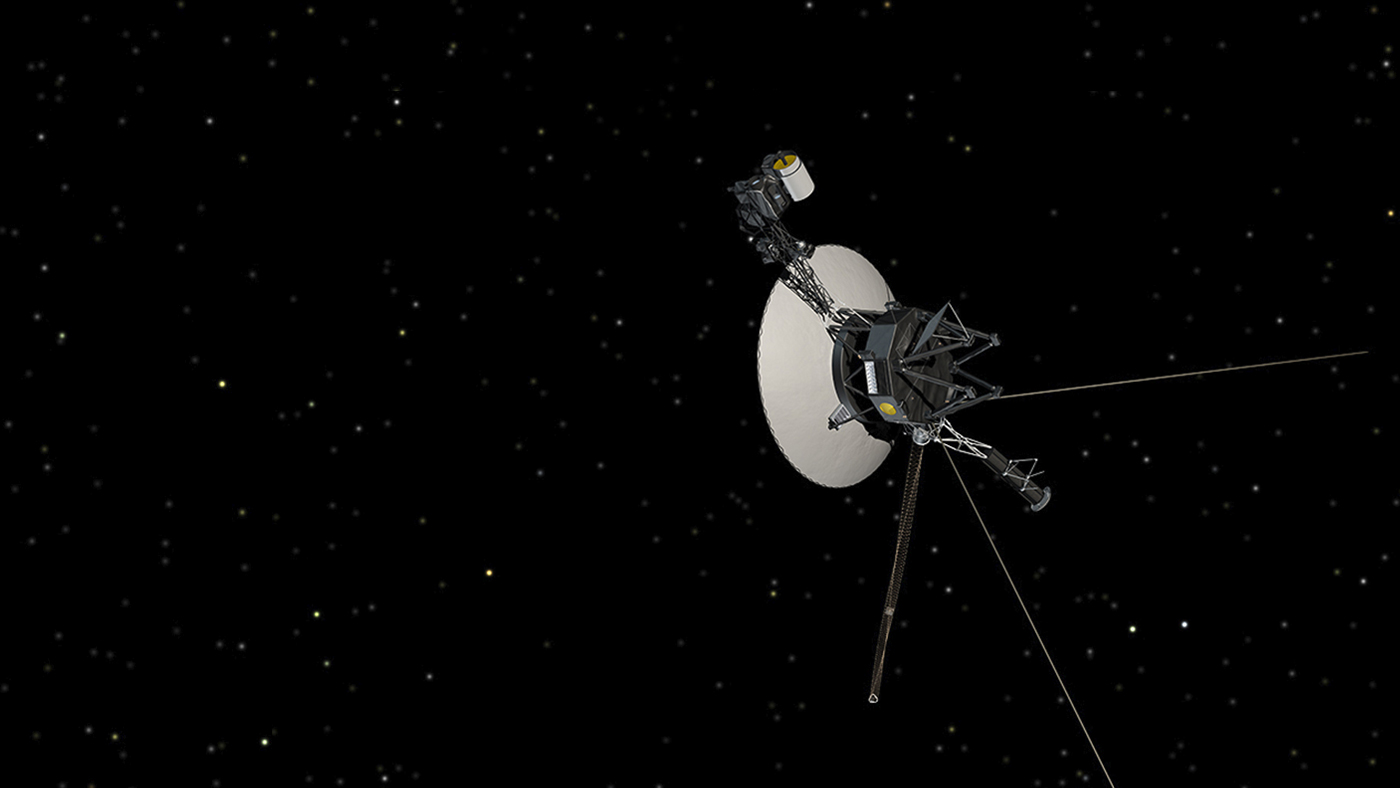
Between them, Voyager 1 and 2 explored all the giant planets of our outer solar system, Jupiter, Saturn, Uranus and Neptune; 48 of their moons; and the unique system of rings and magnetic fields those planets possess.
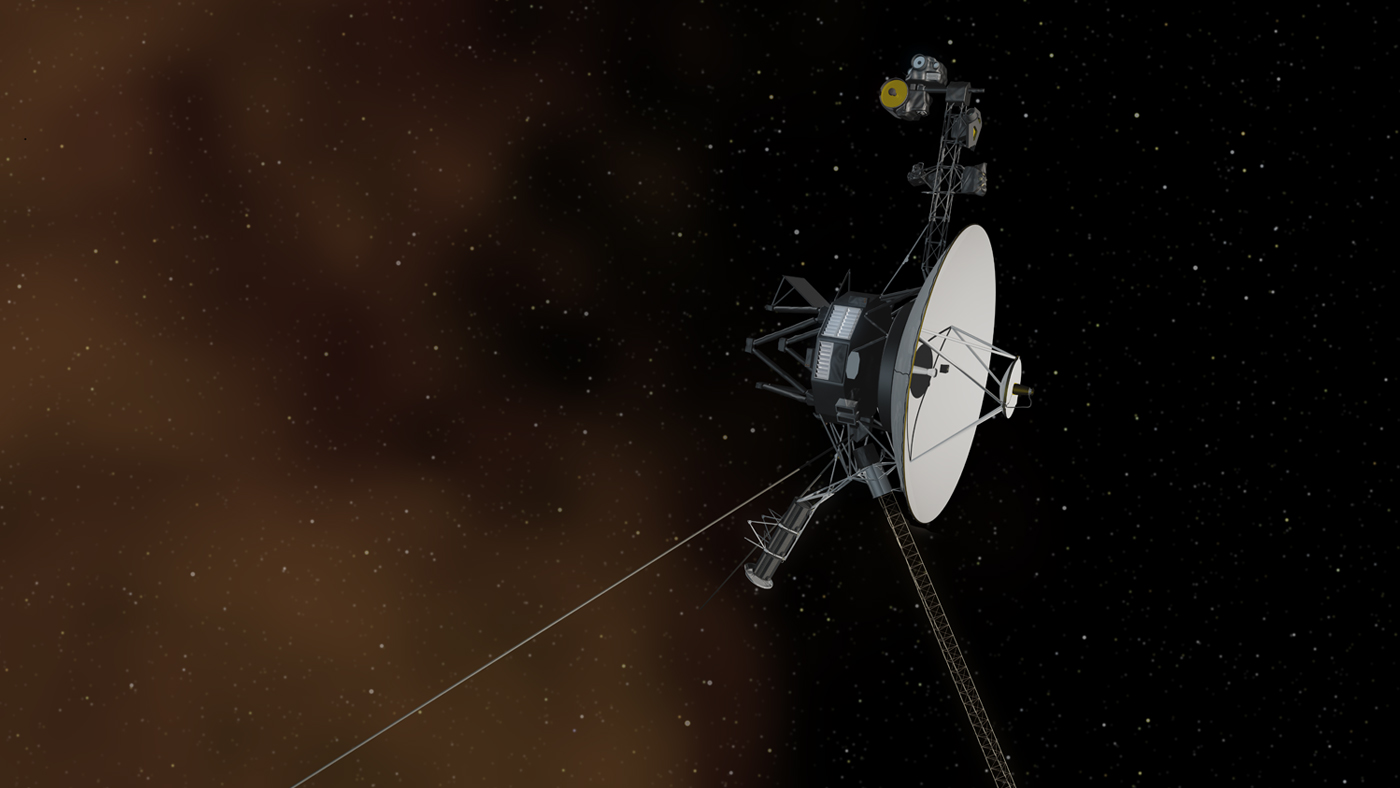
The Voyager spacecraft are the third and fourth human spacecraft to fly beyond all the planets in our solar system. Pioneers 10 and 11 preceded Voyager in outstripping the gravitational attraction of the Sun.
Voyager 1 crossed the termination shock in December 2004 at about 94 AU from the Sun while Voyager 2 crossed it in August 2007 at about 84 AU.
Both Voyager spacecrafts carry a greeting to any form of life, should that be encountered. The message is carried by a phonograph record - -a 12-inch gold-plated copper disk containing sounds and images selected to portray the diversity of life and culture on Earth.
In August 2012, Voyager 1 made the historic entry into interstellar space, the region between stars, filled with material ejected by the death of nearby stars millions of years ago. Voyager 2 entered interstellar space on November 5, 2018 and scientists hope to learn more about this region. Both spacecraft are still sending scientific information about their surroundings through the Deep Space Network, or DSN.
The primary mission was the exploration of Jupiter and Saturn. After making a string of discoveries there — such as active volcanoes on Jupiter's moon Io and intricacies of Saturn's rings — the mission was extended. Voyager 2 went on to explore Uranus and Neptune, and is still the only spacecraft to have visited those outer planets. The adventurers' current mission, the Voyager Interstellar Mission (VIM), will explore the outermost edge of the Sun's domain. And beyond.
Learn about Voyagers' mission status: where they are in the space, the time required to communicate with them, and a lot more.
Learn about the five science investigation teams, the four operating instruments on-board and the science data being returned to Earth.
The Voyager spacecraft have been exploring for decades. Dive deep into the journey with this interactive timeline.
Interact in 3D. Take a deeper look at the sophisticated systems and instruments that deliver the stunning science and images.
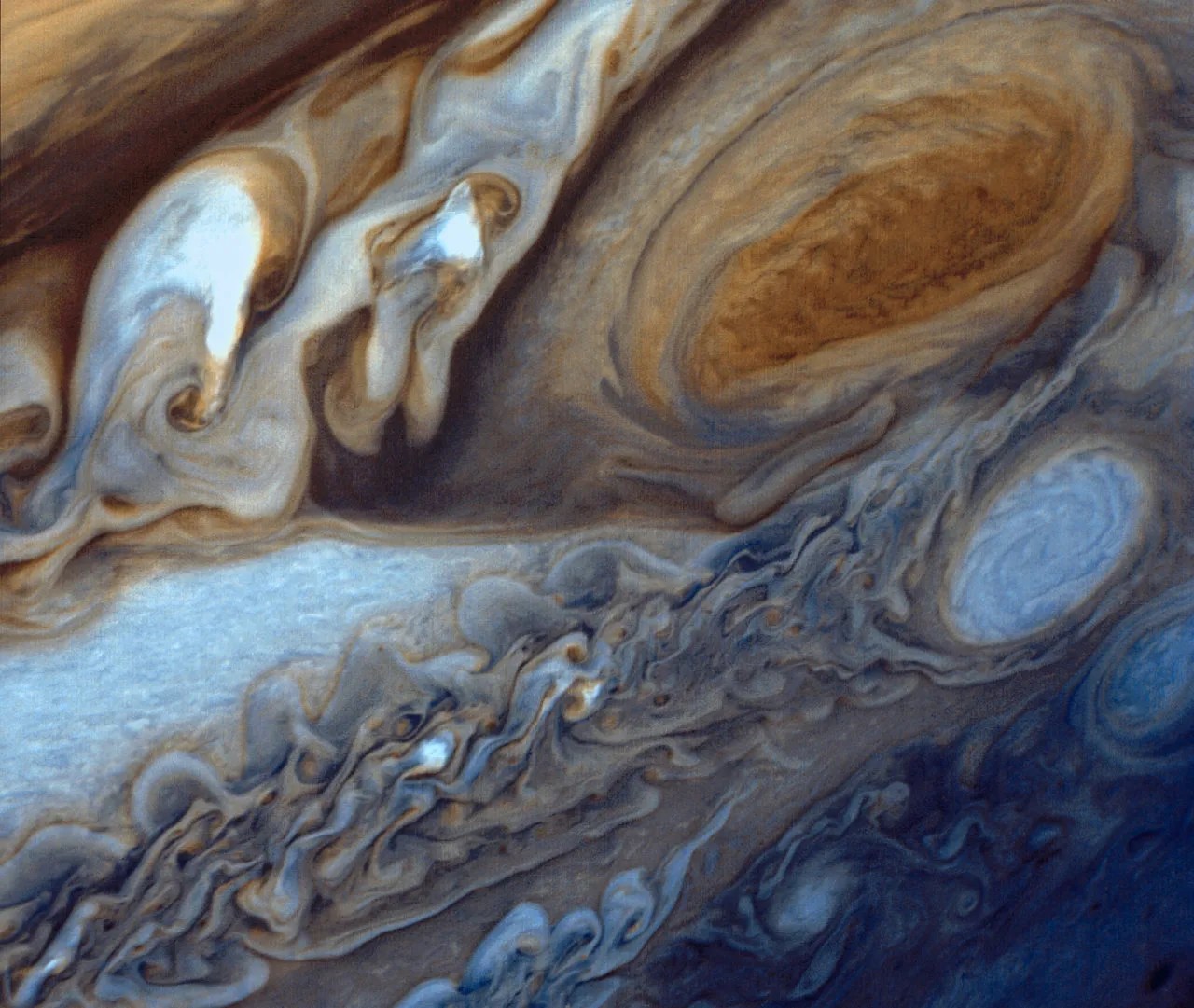
Interstellar Mission
The mission objective of the Voyager Interstellar Mission (VIM) is to extend the NASA exploration of the solar system beyond the neighborhood of the outer planets to the outer limits of the Sun's sphere of influence, and possibly beyond.
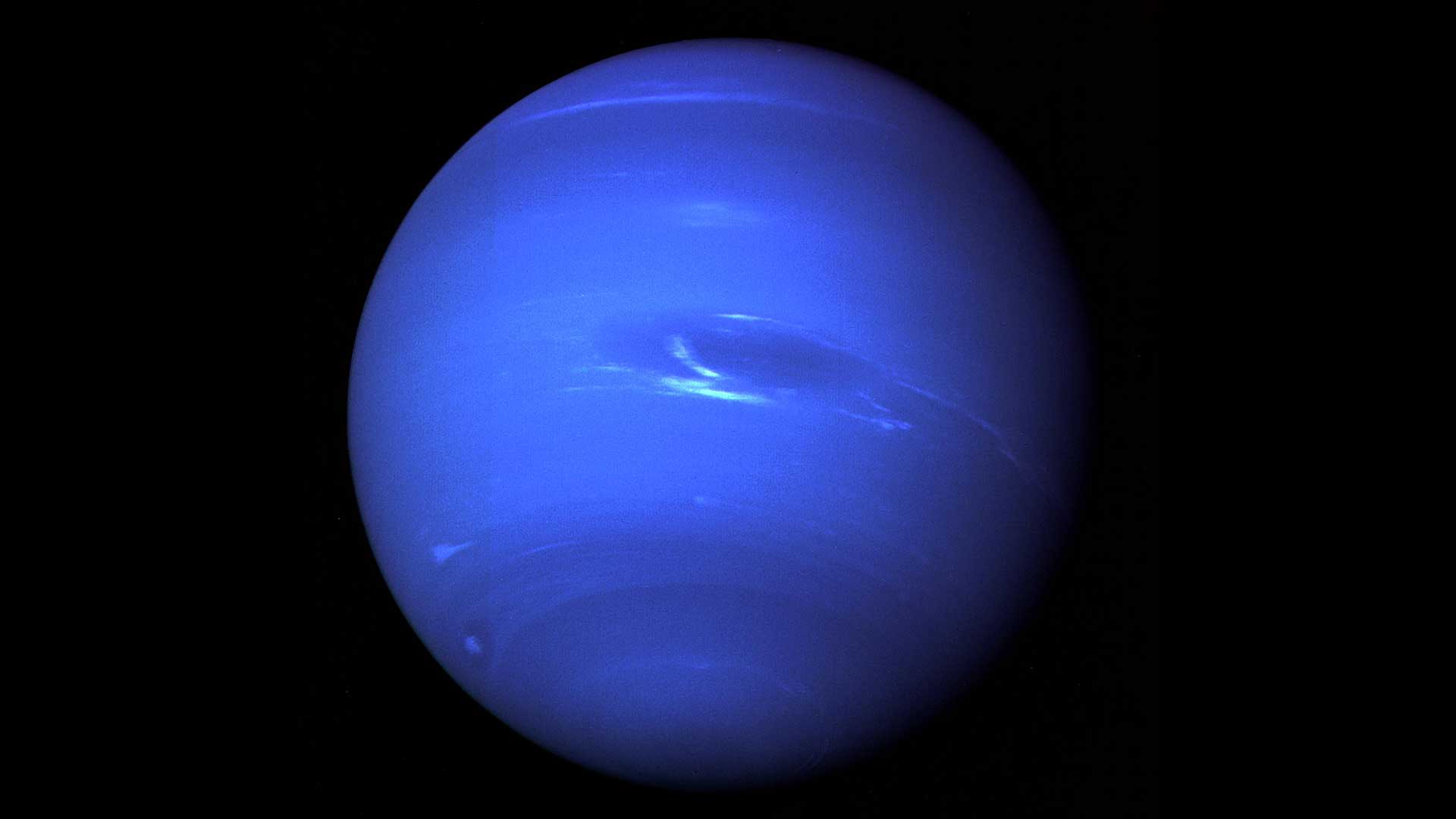
Planetary Voyage
The twin spacecraft Voyager 1 and Voyager 2 were launched by NASA in separate months in the summer of 1977 from Cape Canaveral, Florida. As originally designed, the Voyagers were to conduct closeup studies of Jupiter and Saturn, Saturn's rings, and the larger moons of the two planets.
Questions, answers and interviews that explain the Voyager mission.
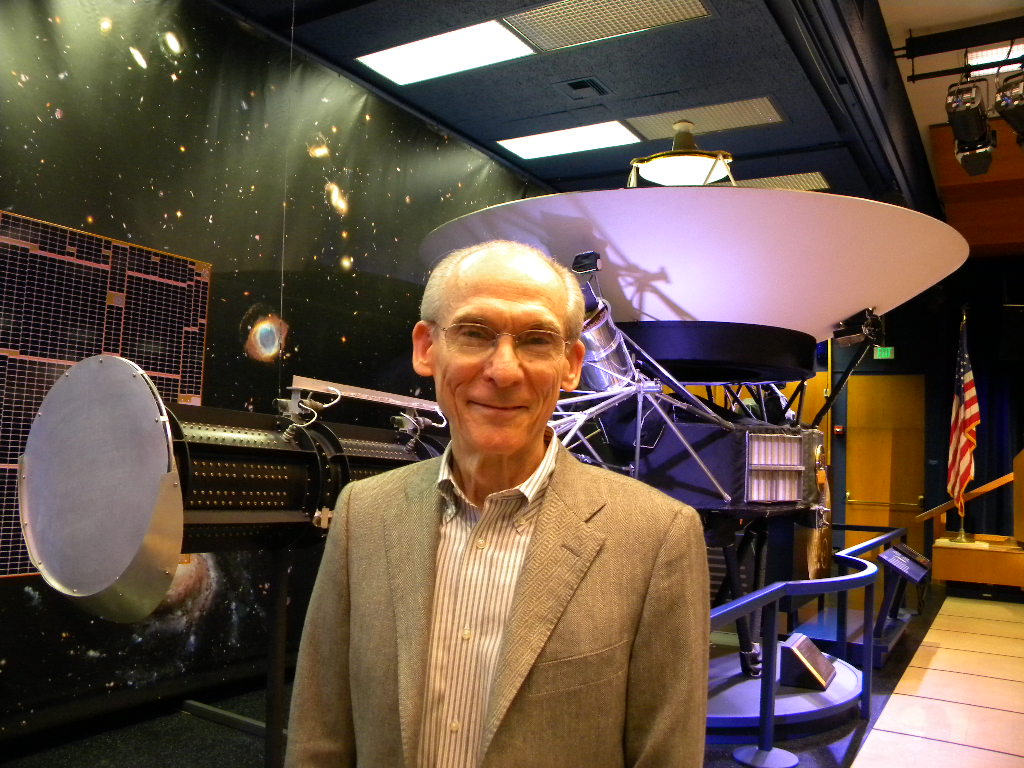
More From Forbes
Nasa voyager 1 back to science after glitch in interstellar space.
- Share to Facebook
- Share to Twitter
- Share to Linkedin
An illustration shows a Voyager spacecraft in space. The twin Voyager 1 and Voyager 2 probes ... [+] launched in 1977.
Not bad for a 46-year-old spacecraft. NASA’s Voyager 1 is back in business after a serious glitch in November put a stop to its science work for months. The probe is humanity’s most distant emissary as it explores interstellar space—the space between stars. NASA’s ability to fix the elderly spacecraft over a great distance is a testament to perseverance and ingenuity.
Two of Voyager 1’s instruments are working again and sending back usable science data. “The mission’s science instrument teams are now determining steps to recalibrate the remaining two instruments, which will likely occur in the coming weeks,” said NASA in a statement on May 22. “The achievement marks significant progress toward restoring the spacecraft to normal operations.”
Voyager 1 is in uncharted territory with both its location and its age. The probe is over 15 billion miles away from home. It takes more than 22.5 hours for a message from Earth to reach the probe and another 22.5 hours to receive a response. That means troubleshooting works in slow motion. Voyager 1 and its twin Voyager 2 launched back in 1977, so the team is working with decades-old systems, technology and documentation. Voyager 1 became the first human-made object to leave the solar system in 2012 when it entered interstellar space. Voyager 2 took the same cosmic step in 2018.
Voyager 1’s plasma wave subsystem and magnetometer instrument are sending usable data. The team is still working on fixing the cosmic ray subsystem and low-energy charged particle instrument. This process could take weeks. “Kinda like when your power goes out and you have to go around your whole house resetting all your electronics,” the Voyager 1 team tweeted on X. “That's basically what my team and I are doing now.”
Fortnite Servers Are Down Here s When Chapter 5 Season 3 Begins Updated
Here’s what happens if trump is convicted—as trial goes to jury next week, biden vs trump 2024 election polls trump leads by 2 points latest survey shows.
Returning Voyager 1 to science operations has been an incremental process. The probe began sending back garbled data in late November and it took time to track down the source of the glitch . “The team eventually determined the issue stemmed from a small portion of corrupted memory in the flight data subsystem, one of the spacecraft’s three computers,” said NASA. “Among other things, this system is designed to package data from the science instruments as well as engineering data about the health and status of the spacecraft before that information is sent to Earth.”
A gold record ready to be attached to a Voyager space probe, circa 1977. The record, The Sounds Of ... [+] Earth, contains a selection of recordings of life and culture on Earth. (Photo by NASA/Hulton Archive/Getty Images)
With the source located, the team set about reworking Voyager 1’s code. By late April, the probe was once again making sense . Getting two instruments back to science work marks a major milestone in the recovery operation. Every day Voyager 1 continues to function is a small miracle. NASA’s heroic troubleshooting efforts will help scientists better understand interstellar space .
The spacecraft won’t last forever, but NASA hopes to keep at least one instrument working on both Voyager 1 and Voyager 2 until around 2025. Even if the science instruments go into retirement, the probes could stay in touch with Earth for many years to come. And there’s always the hope Voyager’s Golden Record —a phonograph record full of messages from Earth—may one day be found by intelligent life from beyond our solar system. In the meantime, Voyager 1 is back to work for as long as it will last.

- Editorial Standards
- Reprints & Permissions
Join The Conversation
One Community. Many Voices. Create a free account to share your thoughts.
Forbes Community Guidelines
Our community is about connecting people through open and thoughtful conversations. We want our readers to share their views and exchange ideas and facts in a safe space.
In order to do so, please follow the posting rules in our site's Terms of Service. We've summarized some of those key rules below. Simply put, keep it civil.
Your post will be rejected if we notice that it seems to contain:
- False or intentionally out-of-context or misleading information
- Insults, profanity, incoherent, obscene or inflammatory language or threats of any kind
- Attacks on the identity of other commenters or the article's author
- Content that otherwise violates our site's terms.
User accounts will be blocked if we notice or believe that users are engaged in:
- Continuous attempts to re-post comments that have been previously moderated/rejected
- Racist, sexist, homophobic or other discriminatory comments
- Attempts or tactics that put the site security at risk
- Actions that otherwise violate our site's terms.
So, how can you be a power user?
- Stay on topic and share your insights
- Feel free to be clear and thoughtful to get your point across
- ‘Like’ or ‘Dislike’ to show your point of view.
- Protect your community.
- Use the report tool to alert us when someone breaks the rules.
Thanks for reading our community guidelines. Please read the full list of posting rules found in our site's Terms of Service.
Voyager Probes Heliosphere Chart

This graphic shows the position of the Voyager 1 and Voyager 2 probes, relative to the heliosphere, a protective bubble created by the Sun that extends well past the orbit of Pluto. Voyager 1 crossed the heliopause, or the edge of the heliosphere, in 2012. Voyager 2 is still in the heliosheath, or the outermost part of the heliosphere.
The Voyager spacecraft were built by JPL, which continues to operate both. JPL is a division of Caltech in Pasadena. California. The Voyager missions are a part of the NASA Heliophysics System Observatory, sponsored by the Heliophysics Division of the Science Mission Directorate in Washington. For more information about the Voyager spacecraft, visit https://www.nasa.gov/voyager and https://voyager.jpl.nasa.gov .
For IEEE Members
Ieee spectrum, follow ieee spectrum, support ieee spectrum, enjoy more free content and benefits by creating an account, saving articles to read later requires an ieee spectrum account, the institute content is only available for members, downloading full pdf issues is exclusive for ieee members, downloading this e-book is exclusive for ieee members, access to spectrum 's digital edition is exclusive for ieee members, following topics is a feature exclusive for ieee members, adding your response to an article requires an ieee spectrum account, create an account to access more content and features on ieee spectrum , including the ability to save articles to read later, download spectrum collections, and participate in conversations with readers and editors. for more exclusive content and features, consider joining ieee ., join the world’s largest professional organization devoted to engineering and applied sciences and get access to all of spectrum’s articles, archives, pdf downloads, and other benefits. learn more →, join the world’s largest professional organization devoted to engineering and applied sciences and get access to this e-book plus all of ieee spectrum’s articles, archives, pdf downloads, and other benefits. learn more →, access thousands of articles — completely free, create an account and get exclusive content and features: save articles, download collections, and talk to tech insiders — all free for full access and benefits, join ieee as a paying member., how nasa is hacking voyager 1 back to life, engineers found space in the geriatric spacecraft’s memory to deal with a stuck bit.

Voyager 1 whizzes through interstellar space at 17 kilometers per second.
On 14 November 2023, NASA’s interstellar space probe Voyager 1 began sending gibberish back to Earth. For five months, the spacecraft transmitted unusable data equivalent to a dial tone.
In March, engineers discovered the cause of the communication snafu: a stuck bit in one of the chips comprising part of Voyager’s onboard memory. The chip contained lines of code used by the flight data subsystem (FDS), one of three computers aboard the spacecraft and the one that is responsible for collecting and packaging data before sending it back to Earth.
JPL engineers sent a command through the Deep Space Network on 18 April to relocate the affected section of code to another part of the spacecraft’s memory, hoping to fix the glitch in the archaic computer system. Roughly 22.5 hours later, the radio signal reached Voyager in interstellar space, and by the following day it was clear the command had worked. Voyager began returning useful data again on 20 April.
NASA engineers managed to diagnose and repair Voyager 1 from 24 billion kilometers away—all while working within the constraints of the vintage technology. “We had some people left that we could rely on [who] could remember working on bits of the hardware,” says project scientist Linda Spilker . “But a lot of it was going back through old memos, like an archeological dig to try and find information on the best way to proceed.”
Minuscule Memory
Voyager 1 and its twin, Voyager 2—which also remains operational—were launched nearly 50 years ago, in 1977, to tour the solar system. Both spacecraft far surpassed their original missions of visiting Jupiter and Saturn, and in 2012, entered interstellar space .
“That mission literally rewrote the textbooks on the solar system,” says Jim Bell , a planetary scientist at Arizona State University and author of a book recounting 40 years of the mission. “We’ve never sent anything out that far, so every bit of data they send back is new.” The 1960s and 1970s technology, on the other hand, is now ancient.
Decades after the tech went out of vogue, the FDS still uses assembly language and 16-bit words . “These are two positively geriatric spacecraft,” says Todd Barber , a propulsion engineer for Voyager. Working to fix the issues, he says, is “like palliative care.”
To first diagnose the issue, NASA’s engineers first tried turning on and off different instruments, says Spilker. When that proved unsuccessful, they initiated a full memory readout of the FDS. “That’s what led to us finding that piece of hardware that had failed and that 256-bit chunk of memory,” she says. In one chip, the engineers found a stuck bit, fixed at the same binary value. It became clear that the chip was irreparable, so the team had to identify and relocate the affected code.
However, no single location was large enough to accommodate the extra 256 bits. “The size of the memory was the biggest challenge in this anomaly,” says Spilker. Voyager’s computers each have a mere 69.63 kilobytes of memory.
To begin fixing the issue, the team searched for corners of Voyager’s memory to place segments of code that would allow for the return of engineering data, which includes information about the status of science instruments and the spacecraft itself. One way the engineers freed up extra space was by identifying processes no longer used. For example, Voyager was programmed with several data modes—the rate at which data is sent back to Earth—because the spacecraft could transmit data much faster when it was closer to Earth. At Jupiter, the spacecraft transmitted data at 115.2 kilobits per second; now, that rate has slowed to 40 bits per second, and faster modes can be overwritten. However, the engineers have to be careful to ensure they don’t delete code that is used by multiple data modes.
Having successfully returned engineering data, the team is working to relocate the rest of the affected code in the coming weeks. “We’re having to look a little harder to find the space and make some key decisions about what to overwrite,” says Spilker. When their work is completed, the Voyager team hopes to return new science data, though unfortunately, all data from the anomaly period was lost.
Built to Last
The cause of the stuck bit is a mystery, but it’s likely the chip either wore out with age or was hit by a highly energetic particle from a cosmic ray. Having entered interstellar space, “Voyager is out bathed in the cosmic rays,” Spilker says. Luckily, the spacecraft was built to take it, with its electronic components shielded from the large amount of radiation present at Jupiter. “That’s serving us quite well now in the interstellar medium.”
When Voyager was built, the 12-year trip to Uranus and Neptune alone was a “seemingly impossible goal for a 1977 launch,” says Barber. The longevity of Voyager is a testament of its engineering, which accounted for many contingencies and added redundancy. The mission also included several firsts, for example, as the first spacecraft with computers able to hold data temporarily using volatile CMOS memory. (An 8-track digital tape recorder onboard stores data when collected at a high rate.)
Importantly, it was also the first mission with a reprogrammable computer. “We take it for granted now,” Bell says, but before Voyager, it wasn’t possible to adjust software in-flight. This capability proved essential when the mission was extended, as well as when issues arise.
Going forward, the Voyager team expects to encounter additional problems in the aging spacecraft—though they hope to make it to the 50-year anniversary before the next one. “With each anomaly, we just learn more about how to work with the spacecraft and are just amazed at the capabilities that the engineers built into it using that 1960s and ’70s technology,” Spilker says. “It’s just amazing.”
- 50 Years Later, This Apollo-Era Antenna Still Talks to Voyager 2 ›
- Voyager 1 Hasn't Really Left The Solar System, But That's OK ›
- Mission Status - Voyager ›
- Voyager 1 ›
Gwendolyn Rak is a contributor to IEEE Spectrum with interests in biotechnology and aerospace. She holds a master’s degree in science journalism from New York University.
I worked with COSMAC and similar rudimentary processors in the early 70’s so was curious to learn how they solved this problem. The nearest it got was “they initiated a full memory readout of the FDS.” But if the telemetry was faulty how did the get the readout?
How to EMP-Proof a Building
Video friday: a starbucks with 100 robots, three new supercomputers reach top of green500 list, related stories, satellite radar sharpens ukraine dam collapse questions, the most hackable handheld ham radio yet, faster, more secure photonic chip boosts ai training.
Things are finally looking up for the Voyager 1 interstellar spacecraft
"It's wonderful to know how much the world appreciates this mission."

I was once sitting with my father while Googling how far away various things in the solar system are from Earth. He was looking for exact numbers, and very obviously grew more invested with each new figure I shouted out. I was thrilled. The moon? On average, 238,855 miles (384,400 kilometers) away. The James Webb Space Telescope? Bump that up to about a million miles (1,609,344 km) away. The sun? 93 million miles (149,668,992 km) away. Neptune ? 2.8 billion miles (4.5 billion km) away. "Well, wait until you hear about Voyager 1," I eventually said, assuming he was aware of what was coming. He was not.
"NASA's Voyager 1 interstellar spacecraft actually isn't even in the solar system anymore," I announced. "Nope, it's more than 15 billion miles (24 billion km) away from us — and it's getting even farther as we speak." I can't quite remember his response, but I do indeed recall an expression of sheer disbelief. There were immediate inquiries about how that's even physically possible. There were bewildered laughs, different ways of saying "wow," and mostly, there was a contagious sense of awe. And just like that, a new Voyager 1 fan was born.
It is easy to see why Voyager 1 is among the most beloved robotic space explorers we have — and it is thus easy to understand why so many people felt a pang to their hearts several months ago, when Voyager 1 stopped talking to us.
Related: NASA's Voyager 1 spacecraft finally phones home after 5 months of no contact
For reasons unknown at the time, this spacecraft began sending back gibberish in place of the neatly organized and data-rich 0's and 1's it had been providing since its launch in 1977 . It was this classic computer language which allowed Voyager 1 to converse with its creators while earning the title of "farthest human made object." It's how the spacecraft relayed vital insight that led to the discovery of new Jovian moons and, thanks to this sort of binary podcast, scientists incredibly identified a new ring of Saturn and created the solar system's first and only "family portrait." This code, in essence, is crucial to Voyager 1's very being.
Plus, to make matters worse, the issue behind the glitch turned out to be associated with the craft's Flight Data System, which is literally the system that transmits information about Voyager 1's health so scientists can correct any issues that arise. Issues like this one. Furthermore, because of the spacecraft's immense distance from its operators on Earth, it takes about 22.5 hours for a transmission to reach the spacecraft, and then 22.5 hours to receive a transmission back. Alas, things weren't looking good for a while — for about five months, to be precise.
But then, on April 20, Voyager 1 finally phoned home with legible 0's and legible 1's.
Get the Space.com Newsletter
Breaking space news, the latest updates on rocket launches, skywatching events and more!
"The team had gathered early on a weekend morning to see whether telemetry would return," Bob Rasmussen, a member of the Voyager flight team, told Space.com. "It was nice to have everyone assembled in one place like this to share in the moment of learning that our efforts had been successful. Our cheer was both for the intrepid spacecraft and for the comradery that enabled its recovery."
And then, on May 22 , Voyager scientists released the welcome announcement that the spacecraft has successfully resumed returning science data from two of its four instruments, the plasma wave subsystem and magnetometer instrument. They're now working on getting the other two, the cosmic ray subsystem and low energy charged particle instrument, back online as well. Though there technically are six other instruments onboard Voyager, those had been out of commission for some time.

The comeback
Rasmussen was actually a member of the Voyager team in the 1970s, having worked on the project as a computer engineer before leaving for other missions including Cassini , which launched the spacecraft that taught us almost everything we currently know about Saturn. In 2022, however, he returned to Voyager because of a separate dilemma with the mission — and has remained on the team ever since.
"There are many of the original people who were there when Voyager launched, or even before, who were part of both the flight team and the science team," Linda Spilker, a planetary scientist at NASA's Jet Propulsion Laboratory, who also worked on the Voyager mission, told Space.com in the This Week from Space podcast on the TWiT network. "It's a real tribute to Voyager — the longevity not only of the spacecraft, but of the people on the team."
To get Voyager 1 back online, in rather cinematic fashion, the team devised a complex workaround that prompted the FDS to send a copy of its memory back to Earth. Within that memory readout, operators managed to discover the crux of the problem — a corrupted code spanning a single chip — which was then remedied through another (honestly, super interesting ) process to modify the code. On the day Voyager 1 finally spoke again, "you could have heard a pin drop in the room," Spilker said. "It was very silent. Everybody's looking at the screen, waiting and watching."
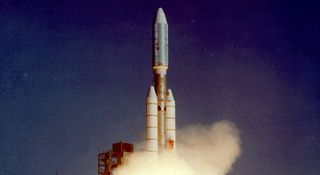
Of course, Spilker also brought in some peanuts for the team to munch on — but not just any peanuts. Lucky peanuts.
It's a longstanding tradition at JPL to have a peanut feast before major mission events like launches, milestones and, well, the possible resurrection of Voyager 1. It began in the 1960s, when the agency was trying to launch the Ranger 7 mission that was meant to take pictures of and collect data about the moon's surface. Rangers 1 through 6 had all failed, so Ranger 7 was a big deal. As such, the mission's trajectory engineer, Dick Wallace, brought lots of peanuts for the team to nibble on and relax. Sure enough, Ranger 7 was a success and, as Wallace once said, "the rest is history."
Voyager 1 needed some of those positive snacky vibes.
"It'd been five months since we'd had any information," Spilker explained. So, in this room of silence besides peanut-eating-noises, Voyager 1 operators sat at their respective system screens, waiting.
"All of a sudden it started to populate — the data," Spilker said. That's when the programmers who had been staring at those screens in anticipation leapt out of their seats and began to cheer: "They were the happiest people in the room, I think, and there was just a sense of joy that we had Voyager 1 back."

Eventually, Rasmussen says the team was able to conclude that the failure probably occurred due to a combination of aging and radiation damage by which energetic particles in space bombarded the craft. This is also why he believes it wouldn't be terribly surprising to see a similar failure occur in the future, seeing as Voyager 1 is still roaming beyond the distant boundaries of our stellar neighborhood just like its spacecraft twin, Voyager 2 .
To be sure, the spacecraft isn't fully fixed yet — but it's lovely to know things are finally looking up, especially with the recent news that some of its science instruments are back on track. And, at the very least, Rasmussen assures that nothing the team has learned so far has been alarming. "We're confident that we understand the problem well," he said, "and we remain optimistic about getting everything back to normal — but we also expect this won't be the last."

In fact, as Rasmussen explains, Voyager 1 operators first became optimistic about the situation just after the root cause of the glitch had been determined with certainty. He also emphasizes that the team's spirits were never down. "We knew from indirect evidence that we had a spacecraft that was mostly healthy," he said. "Saying goodbye was not on our minds."
"Rather," he continued, "we wanted to push toward a solution as quickly as possible so other matters on board that had been neglected for months could be addressed. We're now calmly moving toward that goal."
The future of Voyager's voyage
It can't be ignored that, over the last few months, there has been an air of anxiety and fear across the public sphere that Voyager 1 was slowly moving toward sending us its final 0 and final 1. Headlines all over the internet, one written by myself included , have carried clear, negative weight. I think it's because even if Voyager 2 could technically carry the interstellar torch post-Voyager 1, the prospect of losing Voyager 1 felt like the prospect of losing a piece of history.
"We've crossed this boundary called the heliopause," Spilker explained of the Voyagers. "Voyager 1 crossed this boundary in 2012; Voyager 2 crossed it in 2018 — and, since that time, were the first spacecraft ever to make direct measurements of the interstellar medium." That medium basically refers to material that fills the space between stars. In this case, that's the space between other stars and our sun, which, though we don't always think of it as one, is simply another star in the universe. A drop in the cosmic ocean.
"JPL started building the two Voyager spacecraft in 1972," Spilker explained. "For context, that was only three years after we had the first human walk on the moon — and the reason we started that early is that we had this rare alignment of the planets that happens once every 176 years ." It was this alignment that could promise the spacecraft checkpoints across the solar system, including at Jupiter, Saturn, Uranus and Neptune. Those checkpoints were important for the Voyagers in particular. Alongside planetary visits come gravity assists, and gravity assists can help fling stuff within the solar system — and, now we know, beyond.
As the first humanmade object to leave the solar system, as a relic of America's early space program, and as a testament to how robust even decades-old technology can be, Voyager 1 has carved out the kind of legacy usually reserved for remarkable things lost to time.

— Voyager 1's iconic photo of Earth from space reveals our place in the universe
— Cassini-Huygens: Exploring Saturn's System
— Voyager: 15 incredible images of our solar system captured by the twin probes
"Our scientists are eager to see what they’ve been missing," Rasmussen remarked. "Everyone on the team is self-motivated by their commitment to this unique and important project. That's where the real pressure comes from."
Still, in terms of energy, the team's approach has been clinical and determined.
"No one was ever especially excited or depressed," he said. "We're confident that we can get back to business as usual soon, but we also know that we're dealing with an aging spacecraft that is bound to have trouble again in the future. That's just a fact of life on this mission, so not worth getting worked up about."
Nonetheless, I imagine it's always a delight for Voyager 1's engineers to remember this robotic explorer occupies curious minds around the globe. (Including my dad's mind now, thanks to me and Google.)
As Rasmussen puts it: "It's wonderful to know how much the world appreciates this mission."
Join our Space Forums to keep talking space on the latest missions, night sky and more! And if you have a news tip, correction or comment, let us know at: [email protected].
Monisha Ravisetti is Space.com's Astronomy Editor. She covers black holes, star explosions, gravitational waves, exoplanet discoveries and other enigmas hidden across the fabric of space and time. Previously, she was a science writer at CNET, and before that, reported for The Academic Times. Prior to becoming a writer, she was an immunology researcher at Weill Cornell Medical Center in New York. She graduated from New York University in 2018 with a B.A. in philosophy, physics and chemistry. She spends too much time playing online chess. Her favorite planet is Earth.
Asteroid-bound Psyche spacecraft fires up ion thrusters, starts cruising through space
Euclid 'dark universe' telescope team will unveil new full-color images today (May 23): How to watch live
Will a 'rare' lineup of planets be visible to the naked eye in the night sky on June 3?
- Redderek Actually there are three Voyagers. The third is still at JPL. It is there to be used as a test bed for code check. Quite a nice piece of artwork, electronically. There are no processors since everything was made from discrete logic chips. Reply
- Kastan Fun fact, there is no "up" in space. :) Reply
- Helio Way to go Voyager 1! It is not too long for its 50th anniversary. Reply
Helio said: Way to go Voyager 1! It is not too long for its 50th anniversary.
billslugg said: I remember when the Voyagers went up in 1977. They said they would enter interstellar space some day. I thought "Not in MY lifetime!!" Man, was my face red!
Helio said: But has it? It’s past the heliopause, IIRC, but the Sun’s influence is about 1 lyr., where the Oort ends.
billslugg said: Every atom in the universe influences every other atom. The Sun's influence is predominant up until half way to the nearest star. Once past that point the probe would be in another star system. I always took the heliopause to be where interstellar space started.
- ronih What I find even more amazing is that they can find and successfully receive the signal from the Voyager probes. I think the transmitters are only like 20 watts and the fact that NASA/JPL can pick out a signal that weak from 12-15 billion miles away through all the background noise is astounding. Reply
- Classical Motion What's the bit rate now? Reply
- View All 16 Comments
Most Popular
- 2 'Alien' heard us all scream 45 years ago today. Here's what it was like on opening day
- 3 This Week In Space podcast: Episode 112 — Mars on Pause?
- 4 Towel Day 2024: What's the deal with towels in 'The Hitchhiker's Guide to the Galaxy?'
- 5 A billionaire hopes to upgrade the Hubble Telescope on a private SpaceX mission, but could it really happen?
A 'shout' across interstellar space restores contact between Voyager 2 craft and NASA

After weeks of giving Earth the silent treatment , NASA's Voyager 2 spacecraft is once again communicating with mission control from billions of miles away.
All it took was for the ground team to send an interstellar "shout" across more than 12.3 billion miles instructing the historic probe launched in the 1970s to explore the far reaches of space to turn its antenna back to Earth.
Easy enough, right? Not so much.
NASA’s Jet Propulsion Laboratory wasn't even confident the command would be capable of reaching the wayward probe across the expansive solar system. Failure meant that the space agency would have been waiting until mid-October for Voyager 2 to automatically reorient itself after NASA lost contact with the 46-year-old spacecraft last month.
UFO hearing: Witnesses call for increased military transparency on UFOs during hearing
The array of giant radio network antennas known as the Deep Space Network detected a faint signal last week from Voyager 2, which on July 21 had inadvertently tilted its antenna a mere 2 degrees away from Earth. Though the signal was not strong enough for any data to be extracted, the faint "heartbeat" was enough to give NASA hope that the spacecraft was still operational.
In a Hail Mary effort, a Deep Space Network radio dish in Canberra, Australia sent out a message it hoped would somehow reach the craft and command it to correct its antenna orientation.
It took 18 and-a-half hours for the command to reach Voyager 2, and 37 hours total for mission controllers to know whether it was successful. But after what must have been dozens of tense hours, the team received science and telemetry data from Voyager 2 around 12:30 a.m. on Friday, indicating the craft remains operational and on its expected trajectory.
"NASA has reestablished full communications with Voyager 2," JPL announced , saying that the antenna has realigned with Earth.
Where is Voyager 2?
Voyager 2, which is nearly 46 years into its mission, is roughly 12.4 billion miles from Earth after leaving the heliosphere — the shield that protects the planets from interstellar radiation — five years ago, according to NASA.
The agency provides an interactive diagram tracking Voyager 2's path outside the solar system.
Historic probes launched in the 1970s
Voyager 2 was launched into space in 1977 from Cape Canaveral, Florida with the mission of exploring the outer solar system . Its twin probe, Voyager 1, launched two weeks later and at 15 billion miles away, has the distinction of being the farthest human-made object from Earth .
In 2012, Voyager 1 was the first spacecraft to reach interstellar space , followed in 2018 by Voyager 2.
Voyager 1's communications were not interrupted when a routine command sent its twin probe pointing in the wrong direction last month, disrupting it ability to receive commands or transmit data back to Earth.
Had NASA not reestablished contact, it wouldn't have been until Oct. 15 that Voyager 2 would have automatically repositioned its antenna to ensure it was pointed at its home planet.
'Internet apocalypse': How NASA's solar-storm studies could help save the web
Should they encounter extraterrestrial life, both Voyager 1 and 2 carry the famous " golden record ," functioning both as a time capsule and friendly Earthling greeting. The phonograph record — a 12-inch gold-plated copper disk — contains music, languages and sounds representative of Earth's various cultures and eras.
Eric Lagatta covers breaking and trending news for USA TODAY. Reach him at [email protected].

- The Contents
- The Making of
- Where Are They Now
- Frequently Asked Questions
- Q & A with Ed Stone
golden record
Where are they now.
- frequently asked questions
- Q&A with Ed Stone
News | December 10, 2018
Nasa's voyager 2 probe enters interstellar space.
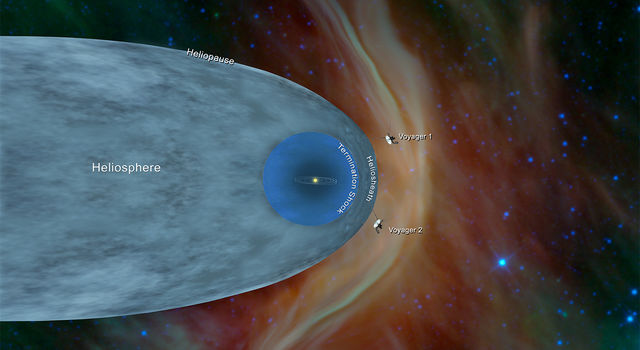
For the second time in history, a human-made object has reached the space between the stars. NASA's Voyager 2 probe now has exited the heliosphere - the protective bubble of particles and magnetic fields created by the Sun.
Members of NASA's Voyager team will discuss the findings at a news conference at 11 a.m. EST (8 a.m. PST) today at the meeting of the American Geophysical Union (AGU) in Washington. The news conference will stream live on the agency's website .
Comparing data from different instruments aboard the trailblazing spacecraft, mission scientists determined the probe crossed the outer edge of the heliosphere on Nov. 5. This boundary, called the heliopause, is where the tenuous, hot solar wind meets the cold, dense interstellar medium. Its twin, Voyager 1 , crossed this boundary in 2012, but Voyager 2 carries a working instrument that will provide first-of-its-kind observations of the nature of this gateway into interstellar space.
Voyager 2 now is slightly more than 11 billion miles (18 billion kilometers) from Earth. Mission operators still can communicate with Voyager 2 as it enters this new phase of its journey, but information - moving at the speed of light - takes about 16.5 hours to travel from the spacecraft to Earth. By comparison, light traveling from the Sun takes about eight minutes to reach Earth.
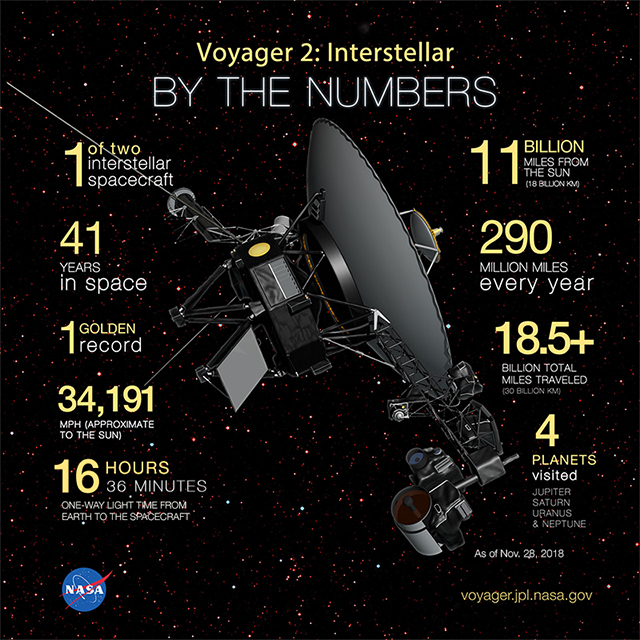
The most compelling evidence of Voyager 2's exit from the heliosphere came from its onboard Plasma Science Experiment ( PLS ), an instrument that stopped working on Voyager 1 in 1980, long before that probe crossed the heliopause. Until recently, the space surrounding Voyager 2 was filled predominantly with plasma flowing out from our Sun. This outflow, called the solar wind, creates a bubble - the heliosphere - that envelopes the planets in our solar system. The PLS uses the electrical current of the plasma to detect the speed, density, temperature, pressure and flux of the solar wind. The PLS aboard Voyager 2 observed a steep decline in the speed of the solar wind particles on Nov. 5. Since that date, the plasma instrument has observed no solar wind flow in the environment around Voyager 2, which makes mission scientists confident the probe has left the heliosphere.
"Working on Voyager makes me feel like an explorer, because everything we're seeing is new," said John Richardson, principal investigator for the PLS instrument and a principal research scientist at the Massachusetts Institute of Technology in Cambridge. "Even though Voyager 1 crossed the heliopause in 2012, it did so at a different place and a different time, and without the PLS data. So we're still seeing things that no one has seen before."
In addition to the plasma data, Voyager's science team members have seen evidence from three other onboard instruments - the cosmic ray subsystem, the low energy charged particle instrument and the magnetometer - that is consistent with the conclusion that Voyager 2 has crossed the heliopause. Voyager's team members are eager to continue to study the data from these other onboard instruments to get a clearer picture of the environment through which Voyager 2 is traveling.
"There is still a lot to learn about the region of interstellar space immediately beyond the heliopause," said Ed Stone, Voyager project scientist based at Caltech in Pasadena, California.
Together, the two Voyagers provide a detailed glimpse of how our heliosphere interacts with the constant interstellar wind flowing from beyond. Their observations complement data from NASA's Interstellar Boundary Explorer ( IBEX ), a mission that is remotely sensing that boundary. NASA also is preparing an additional mission - the upcoming Interstellar Mapping and Acceleration Probe ( IMAP ), due to launch in 2024 - to capitalize on the Voyagers' observations.
"Voyager has a very special place for us in our heliophysics fleet," said Nicola Fox, director of the Heliophysics Division at NASA Headquarters. "Our studies start at the Sun and extend out to everything the solar wind touches. To have the Voyagers sending back information about the edge of the Sun's influence gives us an unprecedented glimpse of truly uncharted territory."
While the probes have left the heliosphere, Voyager 1 and Voyager 2 have not yet left the solar system, and won't be leaving anytime soon. The boundary of the solar system is considered to be beyond the outer edge of the Oort Cloud , a collection of small objects that are still under the influence of the Sun's gravity. The width of the Oort Cloud is not known precisely, but it is estimated to begin at about 1,000 astronomical units (AU) from the Sun and to extend to about 100,000 AU. One AU is the distance from the Sun to Earth. It will take about 300 years for Voyager 2 to reach the inner edge of the Oort Cloud and possibly 30,000 years to fly beyond it.
The Voyager probes are powered using heat from the decay of radioactive material, contained in a device called a radioisotope thermal generator ( RTG ). The power output of the RTGs diminishes by about four watts per year, which means that various parts of the Voyagers, including the cameras on both spacecraft, have been turned off over time to manage power.
"I think we're all happy and relieved that the Voyager probes have both operated long enough to make it past this milestone," said Suzanne Dodd, Voyager project manager at NASA's Jet Propulsion Laboratory (JPL) in Pasadena, California. "This is what we've all been waiting for. Now we're looking forward to what we'll be able to learn from having both probes outside the heliopause."
Voyager 2 launched in 1977, 16 days before Voyager 1, and both have traveled well beyond their original destinations. The spacecraft were built to last five years and conduct close-up studies of Jupiter and Saturn. However, as the mission continued, additional flybys of the two outermost giant planets, Uranus and Neptune, proved possible. As the spacecraft flew across the solar system, remote-control reprogramming was used to endow the Voyagers with greater capabilities than they possessed when they left Earth. Their two-planet mission became a four-planet mission. Their five-year lifespans have stretched to 41 years, making Voyager 2 NASA's longest running mission.
The Voyager story has impacted not only generations of current and future scientists and engineers, but also Earth's culture, including film, art and music. Each spacecraft carries a Golden Record of Earth sounds, pictures and messages. Since the spacecraft could last billions of years, these circular time capsules could one day be the only traces of human civilization.
Voyager's mission controllers communicate with the probes using NASA's Deep Space Network ( DSN ), a global system for communicating with interplanetary spacecraft. The DSN consists of three clusters of antennas inGoldstone, California; Madrid, Spain; and Canberra, Australia.
The Voyager Interstellar Mission is a part of NASA's Heliophysics System Observatory, sponsored by the Heliophysics Division of NASA's Science Mission Directorate in Washington. JPL built and operates the twin Voyager spacecraft. NASA's DSN, managed by JPL, is an international network of antennas that supports interplanetary spacecraft missions and radio and radar astronomy observations for the exploration of the solar system and the universe. The network also supports selected Earth-orbiting missions. The Commonwealth Scientific and Industrial Research Organisation, Australia's national science agency, operates both the Canberra Deep Space Communication Complex, part of the DSN, and the Parkes Observatory, which NASA has been using to downlink data from Voyager 2 since Nov. 8.
For more information about the Voyager mission, visit:
- https://www.nasa.gov/voyager
More information about NASA's Heliophysics missions is available online at:
https://www.nasa.gov/sunearth
News Media Contact
Calla Cofield Jet Propulsion Laboratory, Pasadena, Calif. 626-808-2469 [email protected] Dwayne Brown / Karen Fox NASA Headquarters, Washington 202-358-1726 / 301-286-6284 [email protected] / [email protected]
News Release: 2018-283

8 Alpha Quadrant Things Star Trek: Voyager Found In Delta Quadrant
- Star Trek: Voyager finds familiar things from the Alpha Quadrant in the Delta Quadrant, sparking important questions and connections.
- Encounter with Ferengi negotiators leads Voyager crew to stop their interference in a pre-warp civilization for profits.
- Janeway and crew discover humans abducted by aliens in the 1930s living in the Delta Quadrant, including Amelia Earhart.
For a show with the conceit of being so far from home, Star Trek: Voyager found a surprising number of things in the Delta Quadrant that originated in the Alpha Quadrant, including several from Earth itself. The USS Voyager, commanded by Captain Kathryn Janeway (Kate Mulgrew), and Commander Chakotay's (Robert Beltran) Maquis raider Val Jean were both brought to the Delta Quadrant in 2371 by the Caretaker (Basil Langton). After Janeway destroyed the Caretaker's array to save the Ocampa , Voyager and the Val Jean were left without a ticket back to the Alpha Quadrant, and banded together to make the long journey.
Finding something familiar in an otherwise totally alien corner of the galaxy brought a sense of familiarity to the USS Voyager crew and viewers at home alike, but the presence of something from the Alpha Quadrant in the Delta Quadrant inevitably raised important questions , like how familiar people and objects traveled 70,000 light years from home in the first place, and whether the find could lead Captain Kathryn Janeway towards a quicker path home to Earth.
Star Trek: Voyagers 20 Best Episodes Ranked
A pair of ferengi negotiators, arridor and kol, star trek: voyager season 3, episode 5 "false profits".
The USS Voyager encounters a pair of Ferengi negotiators, Arridor (Dan Shor) and Kol (Leslie Jordan), who claim to be the prophesied Great Sages of the Takarians, a society with Bronze Age level technology. The Ferengi have no Prime Directive to deter them from interfering with the Takarians' development , so they're performing "miracles" with a standard replicator to reap the monetary benefits of the Takarians' worship. Voyager's crew know the Ferengi reputation well enough to know they're no Sages, so they must figure out how to put a stop to Arridor and Kol's grift.
"False Profits" serves as a Star Trek sequel episode to Star Trek: The Next Generation season 3, episode 8 "The Price", as Voyager catches up with Arridor and Kol (formerly played by J. R. Quinonez) seven years after their Delta Quadrant arrival. The Ferengi took a test flight through the supposedly stable wormhole near Barzan II, which was supposed to emerge in the Gamma Quadrant, but instead stranded the Ferengi in the Delta Quadrant, where they made the best of their situation as only Ferengi can.
Star Trek: Voyager Season 3, Episode 23 "Distant Origin"
"Distant Origin" opens on Forra Gegen (Henry Woronicz), a scientist who discovers that his people, the Voth, share certain genetic similarities with the humans aboard the USS Voyager. While this confirms Gegen's theory that the Voth are the descendants of a species brought to their homeworld millions of years ago , religious leader Minister Odala (Concetta Tomei) refuses to accept the truth. Even with Commander Chakotay present as a living specimen of humanity, Odala pushes Gegen to recant, because Gegen's theory goes against the Voth Doctrine that keeps Odala in power.
After meeting Gegen's assistant, Tova Veer (Christopher Liam Moore), Janeway and the Doctor use the holodeck as a research guide to extrapolate how hadrosaurs might look in the 24th century if they'd been able to evolve into a humanoid form with comparable intelligence. The result resembles Veer, so Janeway and the Doctor conclude, like Gegen, that the Voth evolved from hadrosaurs into a highly advanced species on Earth , then fled to the Delta Quadrant in spacefaring vessels instead of being wiped out with the other dinosaurs.
The Friendship One Probe
Star trek: voyager season 7, episode 21 "friendship one".
By Star Trek: Voyager season 7 , the USS Voyager is in regular contact with Starfleet Command, and Starfleet gives Voyager a mission to retrieve a 21st-century Earth probe, Friendship One . The probe proves difficult to find, but once discovered on an alien planet suffering devastating climate collapse, the implications of Friendship One's launch become clear. Besides the irreversible damage to the planet's climate, the inhabitants are all suffering from radiation sickness, and bear understandable hostility towards Earth, because the aliens believe humans orchestrated their destruction with the Friendship One probe.
The United Earth Space Probe Agency was one of the early names for the organization the USS Enterprise belongs to in the Star Trek: The Original Series episode, "Charlie X".
Friendship One was launched in 2067 by the United Earth Space Probe Agency with the intention of making friends with whomever found it, as the name implies. Although Friendship One, the 400-year-old Earth probe, traveled for centuries carrying messages of peace, musical recordings, and ways to translate languages, the people who discovered Friendship One in the Delta Quadrant took a greater interest in the antimatter it used to travel across space. Without the proper knowledge of its use, antimatter proved devastating to the planet and its people, resulting in death and disease for generations.
Dreadnought, a Cardassian Missile
Star trek: voyager season 2, episode 17 "dreadnought".
The USS Voyager discovers a dangerously powerful, self-guided Cardassian missile in the Delta Quadrant, which Lt. B'Elanna Torres (Roxann Dawson) recognizes as one nicknamed "Dreadnought" . When B'Elanna was with the Maquis, Torres had actually reprogrammed the missile herself, with the intention of turning the Cardassians' own weapon against them. Without a Cardassian target in sight, the artificially intelligent Cardassian Dreadnought targets a heavily-populated Class-M planet , Rakosa V. B'Elanna determines she must be the one to keep Dreadnought from hurting anyone else, and boards the missile to convince it to stand down.
While no concrete reason is given for exactly how the Dreadnought wound up in the Delta Quadrant, its last known location in the Alpha Quadrant was the Badlands, the same rough patch of space where Voyager and the Val Jean, Chakotay's Maquis raider, fatefully met. Because of this, Torres theorizes that Dreadnought arrived in the Delta Quadrant the same way that Voyager and the Val Jean did , courtesy of the Caretaker.
Star Trek: Voyagers BElanna Is More Klingon Than TNGs Worf Ever Was
A klingon d-7 class cruiser, complete with klingons, star trek: voyager, season 7, episode 14 "prophecy".
The USS Voyager certainly never expected to find a Klingon ship in the Delta Quadrant, but more surprising is the fact that the crew of the Klingon D-7 Class Cruiser believes their savior, the prophesied kuvah'magh, is aboard Voyager . Janeway assures the Klingon captain, Kohlar (Wren T. Brown), that the Federation and Klingon Empire have been allies for the past 80 years, and offers Voyager's own half-Klingon, Lt. B'Elanna Torres, as proof their societies are working together now. The kuvah'magh is Torres' unborn daughter, who does save the Klingons, but not the way they expected.
Centuries ago, Kohlar's great-grandfather set off on a quest to find the kuvah'magh, and the Klingon D-7 Cruiser became a generation ship that is now crewed by the descendants of its original crew . The quest begun by Kohlar's great-grandfather brought Kohlar and his crew to the Delta Quadrant after four generations of searching. Whether B'Elanna's child is actually the kuvah'magh or not, Kohlar desperately wants the baby to be their savior, so that his people may finally rest.
Amelia Earhart
Star trek: voyager season 2, episode 1 "the 37s".
The discovery of a 1936 Ford truck, seemingly disconnected from any parent vehicle, leads the USS Voyager to a nearby Class-L planet, where they find eight humans who have been in cryo-stasis since they were abducted by aliens in the 1930s. Among them are one of Janeway's personal heroes, legendary American aviator Amelia Earhart (Sharon Lawrence) , who disappeared without a trace while attempting to fly around the world, and Earhart's navigator, Fred Noonan (David Graf). Earhart and the other preserved humans are known by the planet's inhabitants as "The 37s", and revered as sacred.
Originally thought to be aliens, the natives of the unnamed planet are the descendants of humans. A species called the Briori abducted the natives' ancestors, along with Earhart and the other 37s, from Earth centuries earlier , and took them to the Delta Quadrant. Once held as slaves, the humans who weren't in stasis revolted to free themselves from the Briori, and developed a thriving, Earth-like civilization in the Delta Quadrant. Voyager's crew consider staying with the humans in their little slice of home, while Janeway also offers a ride back to Earth to anyone who wants it, including Amelia Earhart.
The USS Equinox
Star trek: voyager season 5, episode 26 & season 6, episode 1 "equinox".
The crew of the USS Voyager believe they're the only Starfleet vessel in the Delta Quadrant until they find the USS Equinox, five years into their journey home. Captain Rudolph Ransom (John Savage) and the Equinox crew have had a harder time in the Delta Quadrant than Voyager, with more damage, fewer starting resources, and fewer opportunities to make friends along the way. Ransom's survival tactics include sacrificing innocent nucleogenic life forms for a more efficient form of fuel, which Janeway finds hard to stomach, and decides that Ransom needs to be held accountable for defying Federation ideals, regardless of how badly the Equinox is damaged.
Although Seven of Nine (Jeri Ryan) suggests that the Equinox might be in the Delta Quadrant on a rescue mission to find Voyager, the USS Equinox's specs don't fit the profile of a starship that would be assigned to a long-range mission. The explanation of how the Equinox arrived in the Delta Quadrant in the first place seems fairly simple, because Captain Ransom tells Janeway that the Equinox was also abducted by the Caretaker , just like Voyager, but the Equinox has only been in the Delta Quadrant for 2 years, and Janeway destroyed the Caretaker's array 5 years earlier.
Seven of Nine
Debuts in star trek: voyager season 4, episode 1 "scorpion, part 2".
When Captain Kathryn Janeway allies with the Borg in order to secure safe passage across Borg space, Janeway refuses the cursory assimilation that the Borg want to use to communicate with Janeway and Voyager's crew, and instead requests a speaker for the Borg, citing the existence of Locutus (Patrick Stewart) as precedent. Seven of Nine , Tertiary Adjunct of Unimatrix 01, is selected as the Borg drone to act as liaison between the Collective and Voyager, likely because Seven of Nine had once been a member of Species 5168, like most of Voyager's crew -- in other words, human.
Voyager season 5, episodes 15 & 16, "Dark Frontier" provides even more detail of the Hansens' fateful journey.
After Seven's link with the Collective is severed, more information about Seven's human origin comes to light. In Voyager season 4, episode 6 "The Raven", when Voyager nears the Hansens' ship, the USS Raven, memories of Seven's early life surface, revealing that Seven had been six-year-old human Annika Hansen , the daughter of Magnus Hansen (Kirk Baily) and Erin Hansen (Laura Stepp), Federation scientists who were studying the Borg when they were assimilated. Voyager season 5, episodes 15 & 16, "Dark Frontier" provides even more detail of the Hansens' fateful journey, showing the Raven arriving in the Delta Quadrant by following a Borg Cube through a transwarp conduit.
10 Ways USS Voyager Changed In Star Treks Delta Quadrant
Star Trek: Voyager links back to the greater Star Trek universe with people and starships from the Alpha Quadrant. Connections to the familiar were especially important early on, because Voyager 's place in the Star Trek franchise was established and aided by the legitimacy these finds offered. Later, when the USS Voyager used the Hirogen communications array to communicate with Starfleet Command, links back to the Alpha Quadrant were plentiful again, not only to prove that the USS Voyager was closer to home, but to help Star Trek: Voyager maintain connections to Star Trek and carry the franchise in its final years.
Star Trek: Voyager is available to stream on Paramount+.
Star Trek: Voyager
Cast Jennifer Lien, Garrett Wang, Tim Russ, Robert Duncan McNeill, Roxann Dawson, Robert Beltran, Kate Mulgrew, Jeri Ryan, Ethan Phillips, Robert Picardo
Release Date May 23, 1995
Genres Sci-Fi, Adventure
Network UPN
Streaming Service(s) Paramount+
Franchise(s) Star Trek
Writers Michael Piller, Rick Berman
Showrunner Kenneth Biller, Jeri Taylor, Michael Piller, Brannon Braga
Rating TV-PG
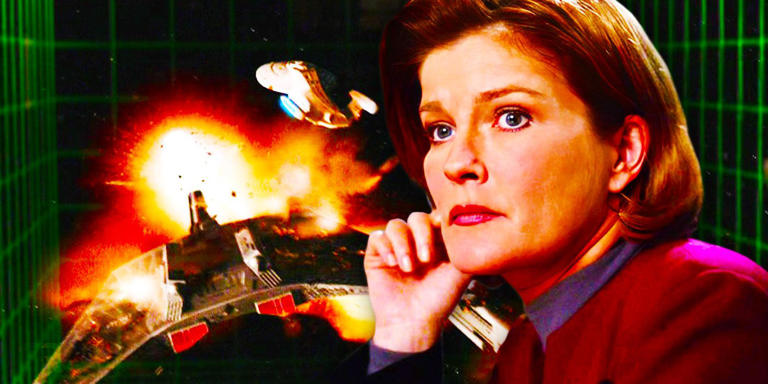

IMAGES
VIDEO
COMMENTS
In the NASA Eyes on the Solar System app, you can see the real spacecraft trajectories of the Voyagers, which are updated every five minutes. Distance and velocities are updated in real-time. For a full 3D, immersive experience click on View Voyagers link below to launch the NASA Eyes on the Solar System app. View Voyager.
This is a real-time indicator of Voyager 1's distance from Earth in astronomical units (AU) and either miles (mi) or kilometers (km). Note: Because Earth moves around the sun faster than Voyager 1 is speeding away from the inner solar system, the distance between Earth and the spacecraft actually decreases at certain times of year.
A poster of the planets and moons visited during the Voyager program. The Voyager program is an American scientific program that employs two interstellar probes, Voyager 1 and Voyager 2.They were launched in 1977 to take advantage of a favorable alignment of the two gas giants Jupiter and Saturn and the ice giants, Uranus and Neptune, to fly near them while collecting data for transmission ...
Voyager 2 is now more than 96 AU from the sun, traveling at a speed of 15.5 kilometers per second (9.6 miles per second). Both spacecraft are moving considerably faster than Pioneers 10 and 11, two earlier spacecraft that became the first robotic visitors to fly past Jupiter and Saturn in the mid-70s. This processed color image of Jupiter was ...
Voyager 1 and its twin Voyager 2 are the only spacecraft ever to operate outside the heliosphere, the protective bubble of particles and magnetic fields generated by the Sun. Voyager 1 reached the interstellar boundary in 2012, while Voyager 2 (traveling slower and in a different direction than its twin) reached it in 2018.
Voyager 2 entered interstellar space on November 5, 2018 and scientists hope to learn more about this region. Both spacecraft are still sending scientific information about their surroundings through the Deep Space Network, or DSN. The primary mission was the exploration of Jupiter and Saturn. After making a string of discoveries there — such ...
The two Voyager space probes made a number of important discoveries about Jupiter, its satellites, its radiation belts, ... Voyager 1 was commanded to change its orientation to measure the sideways motion of the solar wind at that location in space in March 2011 (~33yr 6mo from launch). A test roll done in February had confirmed the spacecraft ...
Voyager 1 live position and data. This page shows Voyager 1 location and other relevant astronomical data in real time. The celestial coordinates, magnitude, distances and speed are updated in real time and are computed using high quality data sets provided by the JPL Horizons ephemeris service (see acknowledgements for details). The sky map shown in the background represents a rectangular ...
About the mission. Voyager 1 reached interstellar space in August 2012 and is the most distant human-made object in existence. Launched just shortly after its twin spacecraft, Voyager 2, in 1977, Voyager 1 explored the Jovian and Saturnian systems discovering new moons, active volcanoes and a wealth of data about the outer solar system.
We now have five spacecraft that have either reached the edges of our solar system or are fast approaching it: Pioneer 10, Pioneer 11, Voyager 1, Voyager 2 and New Horizons. Most of these probes ...
NASA's twin Voyager probes have become, in some ways, time capsules of their era: They each carry an eight-track tape player for recording data, they have about 3 million times less memory than modern cellphones, and they transmit data about 38,000 times slower than a 5G internet connection.. Yet the Voyagers remain on the cutting edge of space exploration.
Voyager 1 is the first spacecraft to travel beyond the solar system and reach interstellar space . The probe launched on Sept. 5, 1977 — about two weeks after its twin Voyager 2 — and as of ...
Jet Propulsion Laboratory, Pasadena, Calif. 818-354-0724. [email protected]. Dwayne Brown. 202-358-1726. [email protected]. 2012-381. NASA's Voyager 1 spacecraft has entered a new region at the far reaches of our solar system that scientists feel is the final area the spacecraft has to cross before reaching interstellar space.
Launched in 1977, the twin Voyager probes are NASA's longest-operating mission and the only spacecraft ever to explore interstellar space. NASA's twin Voyager probes have become, in some ways, time capsules of their era: They each carry an eight-track tape player for recording data, they have about 3 million times less memory than modern cellphones, and they transmit data about 38,000 ...
NASA. Jun 06, 2013. RELEASE 12-416. WASHINGTON - NASA's Voyager 1 spacecraft has entered a new region at the far reaches of our solar system that scientists feel is the final area the spacecraft has to cross before reaching interstellar space. Scientists refer to this new region as a magnetic highway for charged particles because our sun ...
Voyager 2 was launched first, on August 20, 1977; Voyager 1 followed some two weeks later, on September 5. The twin-spacecraft mission took advantage of a rare orbital positioning of Jupiter, Saturn, Uranus, and Neptune that permitted a multiplanet tour with relatively low fuel requirements and flight time. The alignment allowed each spacecraft, following a particular trajectory, to use its ...
The twin spacecraft Voyager 1 and Voyager 2 were launched by NASA in separate months in the summer of 1977 from Cape Canaveral, Florida. As originally designed, the Voyagers were to conduct closeup studies of Jupiter and Saturn, Saturn's rings, and the larger moons of the two planets. FAQ.
Both Voyager probes have outlived their original missions and are exploring interstellar space more than 45 years after launch. The mission team has made clever decisions to manage the power ...
Voyager 1 is in uncharted territory with both its location and its age. The probe is over 15 billion miles away from home. It takes more than 22.5 hours for a message from Earth to reach the probe ...
Voyager Probes Heliosphere Chart. Oct. 3, 2018. This graphic shows the position of the Voyager 1 and Voyager 2 probes, relative to the heliosphere, a protective bubble created by the Sun that extends well past the orbit of Pluto. Voyager 1 crossed the heliopause, or the edge of the heliosphere, in 2012. Voyager 2 is still in the heliosheath, or ...
NASA/JPL. On 14 November 2023, NASA's interstellar space probe Voyager 1 began sending gibberish back to Earth. For five months, the spacecraft transmitted unusable data equivalent to a dial ...
Furthermore, because of the spacecraft's immense distance from its operators on Earth, it takes about 22.5 hours for a transmission to reach the spacecraft, and then 22.5 hours to receive a ...
Historic probes launched in the 1970s. Voyager 2 was launched into space in 1977 from Cape Canaveral, Florida with the mission of exploring the outer solar system.Its twin probe, Voyager 1 ...
NASA's Voyager 2 Probe Enters Interstellar Space. This illustration shows the position of NASA's Voyager 1 and Voyager 2 probes, outside of the heliosphere, a protective bubble created by the Sun that extends well past the orbit of Pluto. Voyager 1 exited the heliosphere in August 2012. Voyager 2 exited at a different location in November 2018.
The United Earth Space Probe Agency was one of the early names for the ... its last known location in the Alpha Quadrant was the Badlands, the same rough patch of space where Voyager and the Val ...